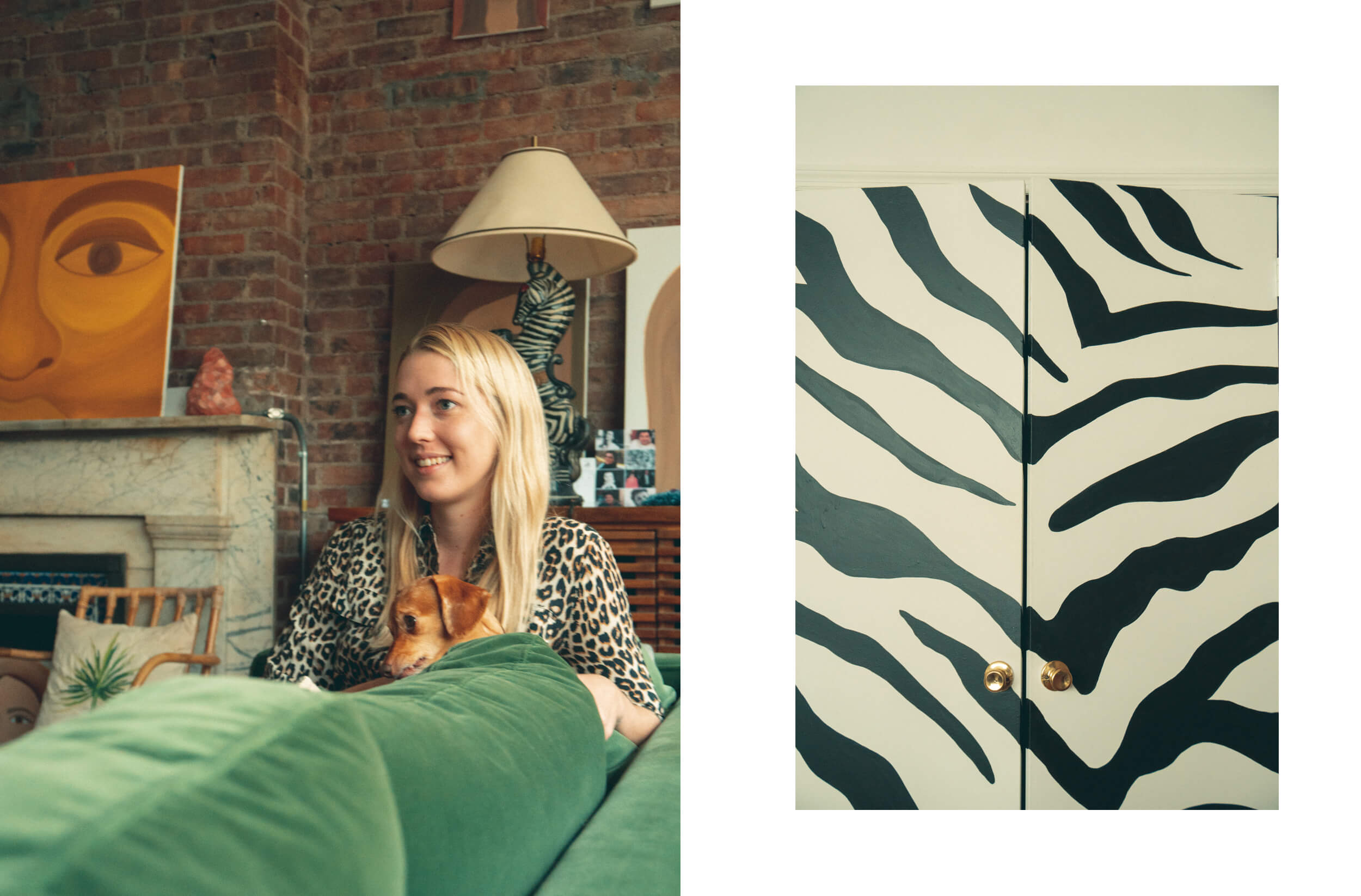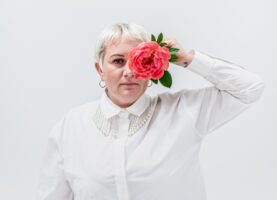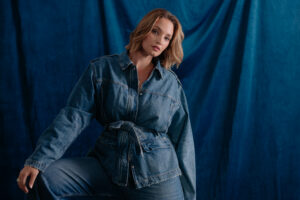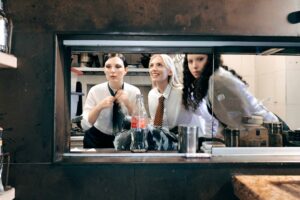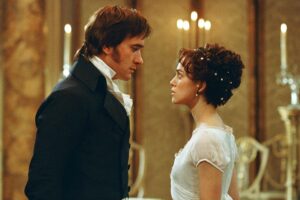I have always been told that art cannot be defined in just one way, and I couldn’t agree more: art is everything we consider as such and, in a world that runs faster than even through the internet and social media, the concept of art itself is constantly evolving in a personal way.
Among the most social-friendly art forms we find satirical illustrations, a way to share a laugh, a message and to do unexpected and unique collaborations, and an example of that approach is given by illustrator and artist Angelica Hicks.
Angelica, half Italian and half English, born in London but now living in New York, her resume counts, among others, a collaboration with Gucci for a T-shirts line, one with the MET Museum for the gadgets of the MET Gala 2019 and one with the feminist cosmetics brand Queendom. We can definitely say that she has come a long way since she began drawing between her study sessions in the library (and after realizing that working in art galleries was definitely not her cup of tea)!
Since we are fans of her playful aesthetic, “with a Zoolander take” as she said, and her satirical illustrations that spare no one (some of which are included in the book “Tongue in Chic: The Fabulous Fashion World of Angelica Hicks”), we met her in New York, where she opened the doors of her apartment full of personality, paintings on the walls and, of course, of drawings and art objects made by her and her family of creatives.
Discover Angelica’s “Fabulous Fashion World”!
When did you first realize that creativity and illustration would be the path that you wanted to follow in your life? Maybe your family is also involved…
Actually, my family is not involved: at school, I was like, “Oh my God, mama and papa are creatives, I don’t want to do that, I’m different.” Everyone always assumed that I would do that, and ask “are you going to do something creative like your mummy and daddy?” And I was like: “No.” So I tried economics, I wasn’t good at it, so that went my dream of being a banker, which is not a dream that one should have, [laugh] but I went instead to university and studied History of Art.
I thought that since it’s academic, I’d be writing, that’s not creative, it’s not an art school. University was fine, but I realized that the library was not the place for me because I just felt a little bit constrained by just words, I guess words are not my medium, alone.
I was always quite good a school, but I just didn’t have the willpower to stay in the library, so I guess I just started doing drawings in order to make it easier to spend so much time working in the library. I would wake up in the morning and be like, “Yes, I get to do a drawing before I go to the library,” and then obviously you have an excuse to come home if there’s something productive. But yeah, my drawing came from that.
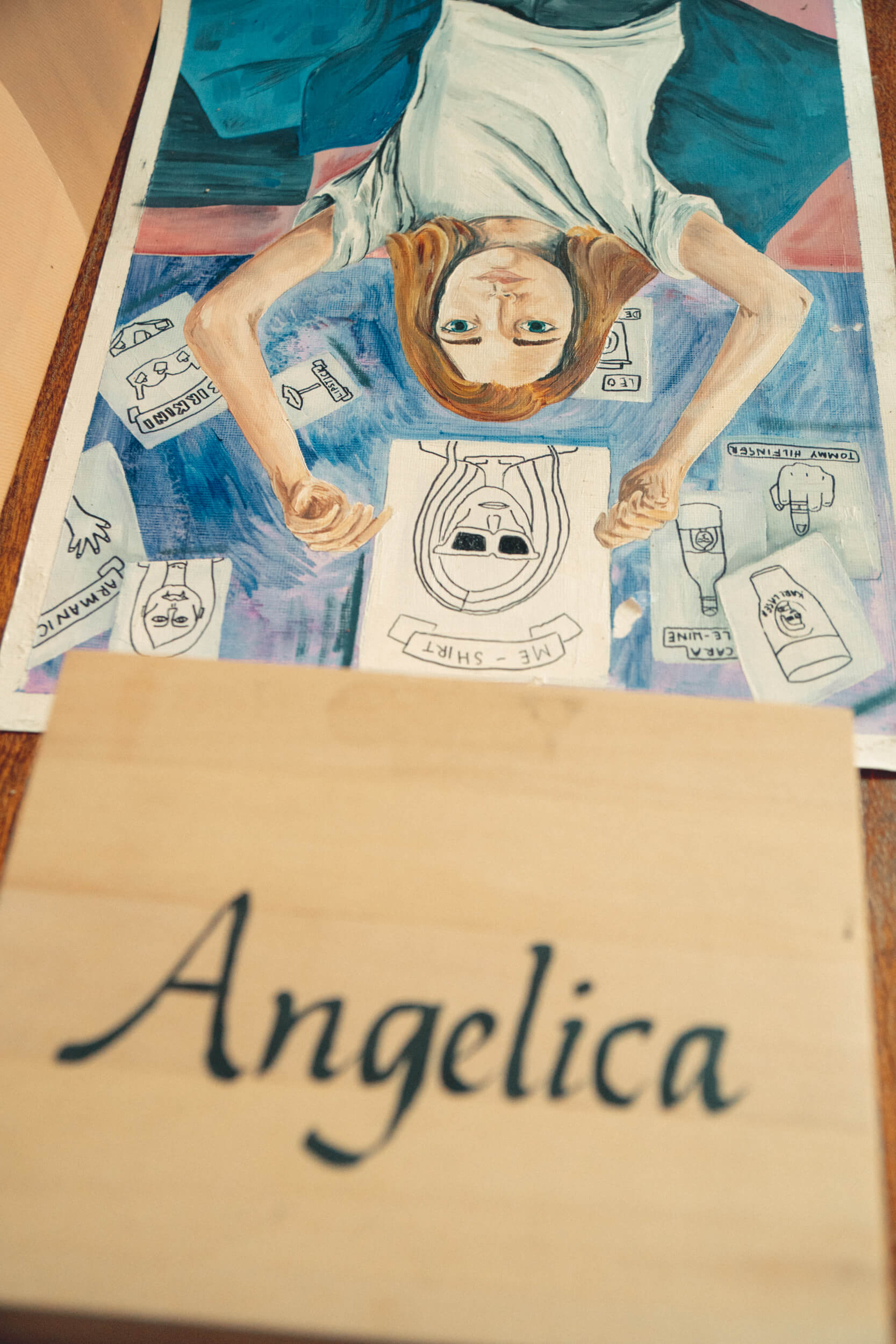
I have always really liked New York, I would come here during the summer because my aunt lives here, and intern so I moved here after graduation. I just really liked the city and I’ve never really liked London, probably because being half Italian and half English is a bit a weird combination; London is quite a difficult city, especially if you are English: socially, culturally, and I found it odd.
I came to New York and I thought to try to get a job in advertising or something because my drawings, especially at the beginning, were very much about words playing with images, so the plan was to be a creative and copywriter in AD agency, but I didn’t realize that getting a VISA would be so difficult. Nobody would take the risk to give me a job with no guarantee of me having a VISA.
But I was still doing these drawings, and I got asked by Porter Magazine to do some drawings for them, but that relationship didn’t end up very well, because that was when I first realized that having creative control is quite an important thing. Since then, I had been very lucky with jobs: now I’m literally given the brief of like “we want you to do what you want to do” and I think that’s very important in my work for me to enjoy a job, to produce the best work with freedom. Then I’ll do jobs like the one I’m doing for the Rockefeller Center right now, where there are guidelines. I need these guidelines but what I don’t need is what some earlier jobs had which was kind of like, “Just do whatever you want,” and then they would give me notes.
This is how I started doing illustrations I suppose.
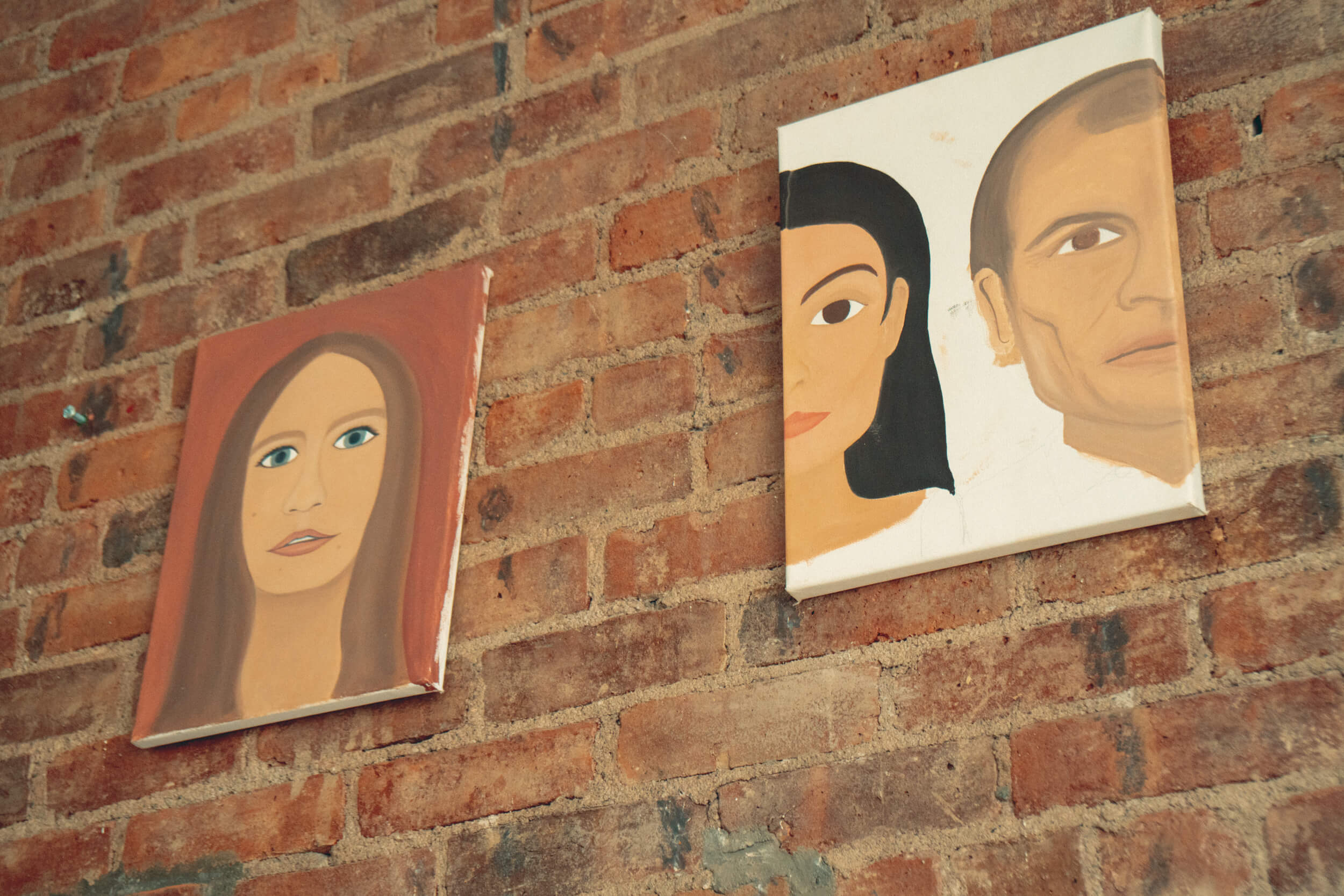
How did you come out with your playful aesthetic?
I think it’s because I saw a lot initially, and I remember actually: there was a lot of fashion illustration and It was all kind of stretched-out bodies, worse than Barbie, literally stick women and it was so kind of “aspirational,” so dreamy, it was quite boring.
I’ve quite liked the comic book aesthetic always – I like fashion obviously, I appreciate it, but I find trends and stuff like that kind of monotonous, a fashion week, and another fashion, and another one, so I thought what kind of fun would be to apply a Zoolander take on fashion, so I just satirized that: with my initial drawings especially, through wordplay, I just made fun of fashion but in an inclusive way.
I was also curious to know how irony became a successful way for you to interpret fashion.
Irony and humor do make things accessible in a way in which there’s the commonality and it’s like “You may not have a coat, but you can get a joke.” I think that’s cool rather than maybe over-analyzing history.
“I thought what kind of fun would be to apply a Zoolander take on fashion.”
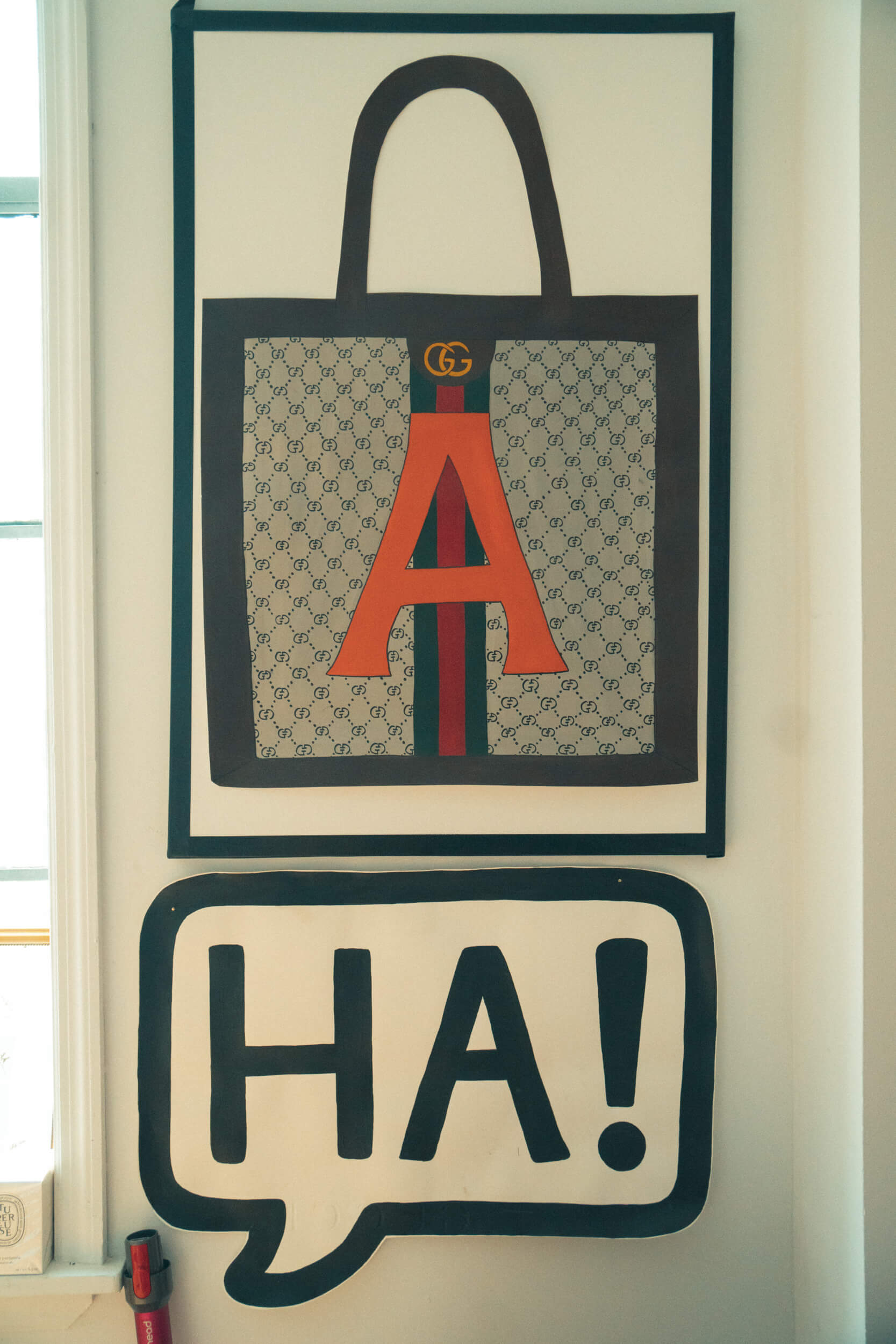
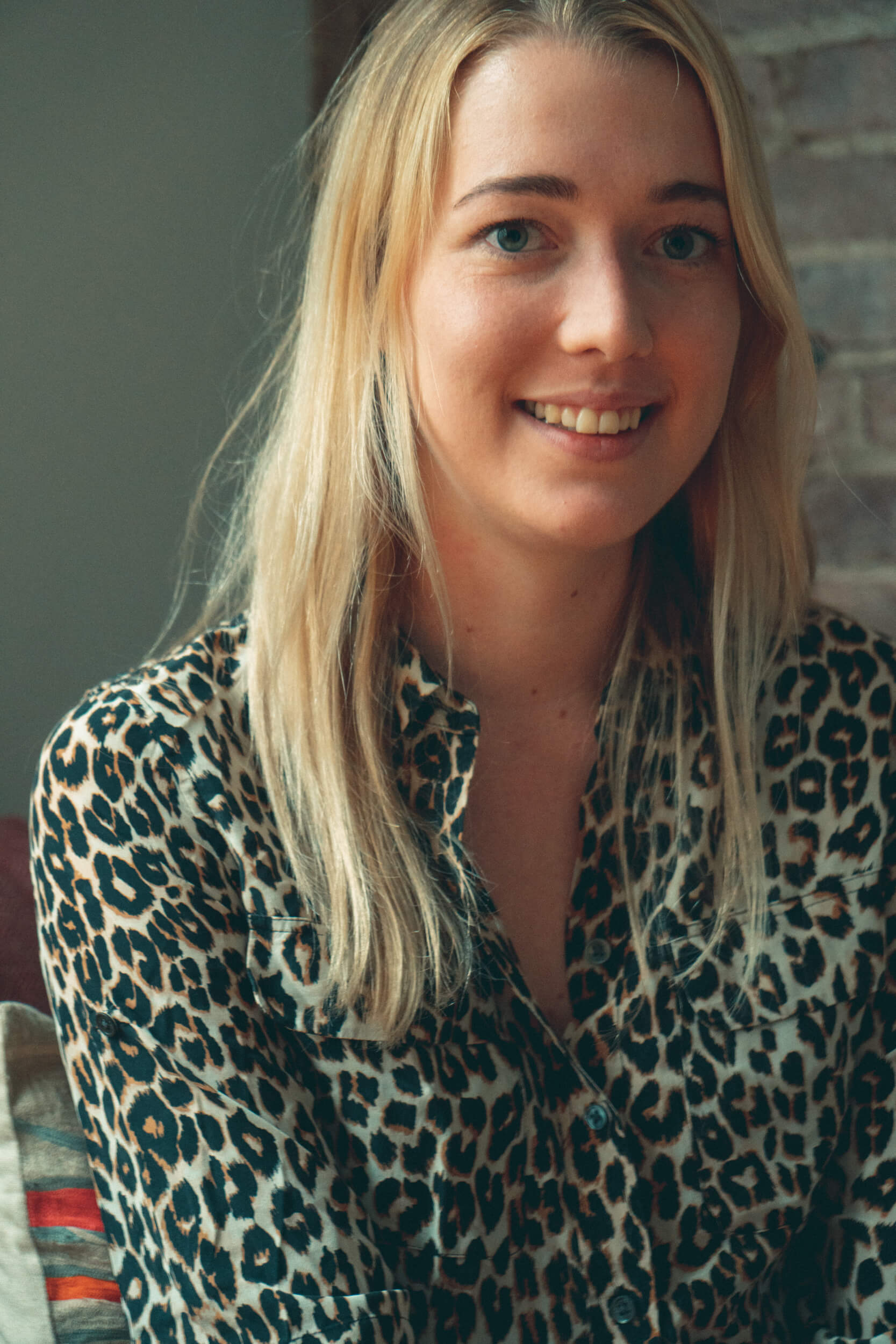
“You may not have a coat, but you can get a joke.”
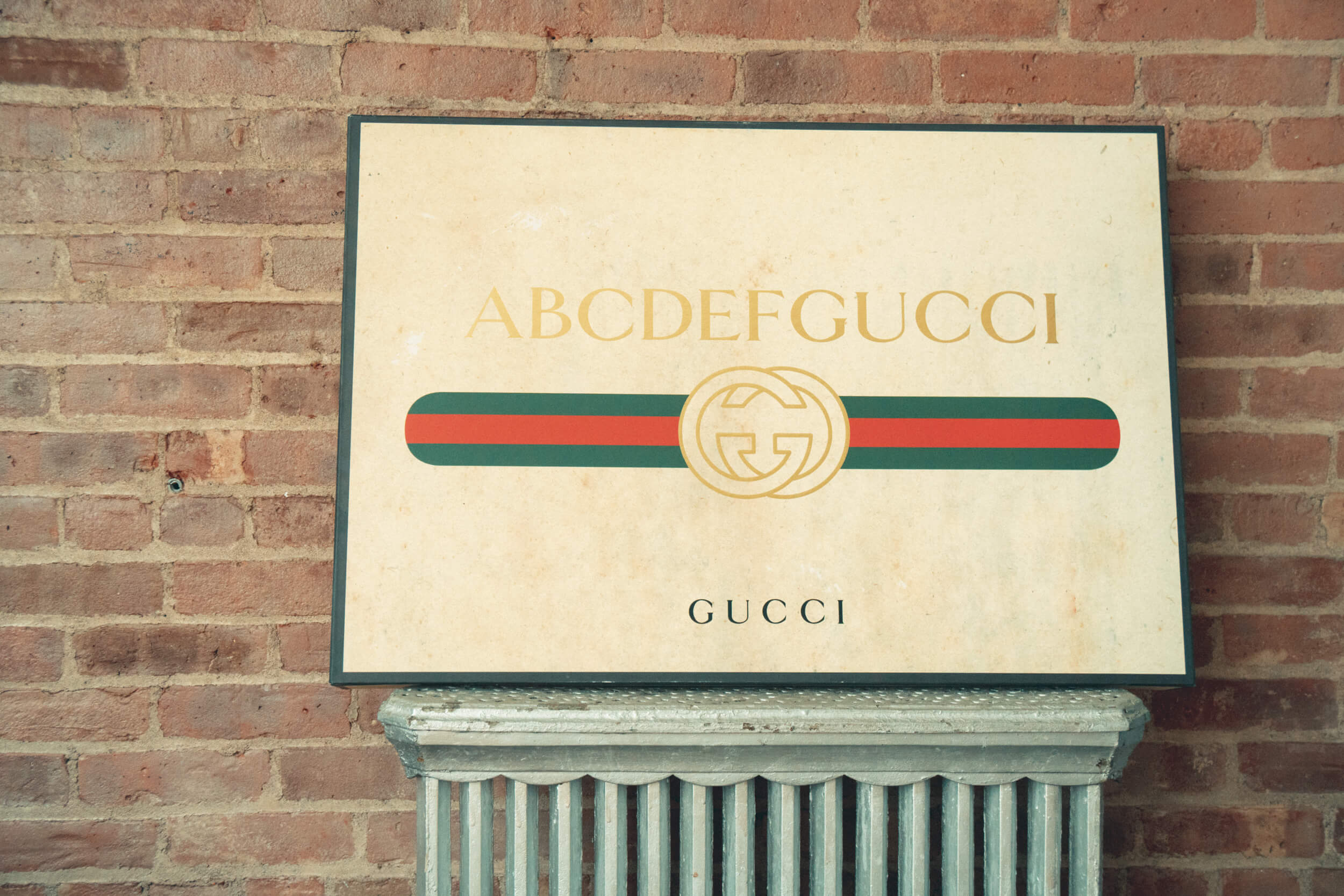
And, about social media…
They were really helpful. Social media has been great.
Even when my Instagram account was private, my approach was always humorous, just with my friends like five years ago, I always thought it was funny and I’ve always liked also doing a funny little caption. And then I just used it to share my work, in a way in which I saw other fashion illustrators who were using it to show that. I started uploading my drawings because I was able to tag brands as well, it’s weird to remember because I’m not sure that there was any specific motivation behind sharing on Instagram, I definitely don’t remember being like, “I can do this as a job”, I didn’t think that, I think I just thought like, “Maybe someone would see it if I put it on Instagram”, it’s self-serving, in the same way in which we post anything in social media, just trying to get a like or a laugh.
And then some people were liking it, sharing it, commenting and then people were like, “Wow, it’s really cool, I really like them” and I kept doing more. And then I got work through Instagram and I thought, “Ok, this is quite cool”, because you don’t have to go parties or meet people, you can just sit on your phone and do what you have to do from home.
Is New York also an inspiration for your work?
It was. I loved New York, I can’t say that I still love it, I know I’m very spoiled to have the opportunity to live here, I feel like maybe I’m no longer getting inspired by it, I’ve been here for four years. I was in Italy last summer and yes, the quality of life is a little bit higher, while the quality of life here is not so high, the cost is high. You become used to it, and I didn’t realize how bad it was until coming back after having been gone for three months. I was like, “Oh, it’s bad, it’s pretty bad.”
But having said that, being in New York has really helped my work as well: it’s not only about meeting people, you also get encouraged because everyone was like, “What do you do? What are you working on? What’s up?” And you need answers to those questions and so there’s that pressure; I’ve always been quite driven and worked pretty hard but I feel like the New York work ethic has helped, especially working from home, because it is so normal here and that does help.
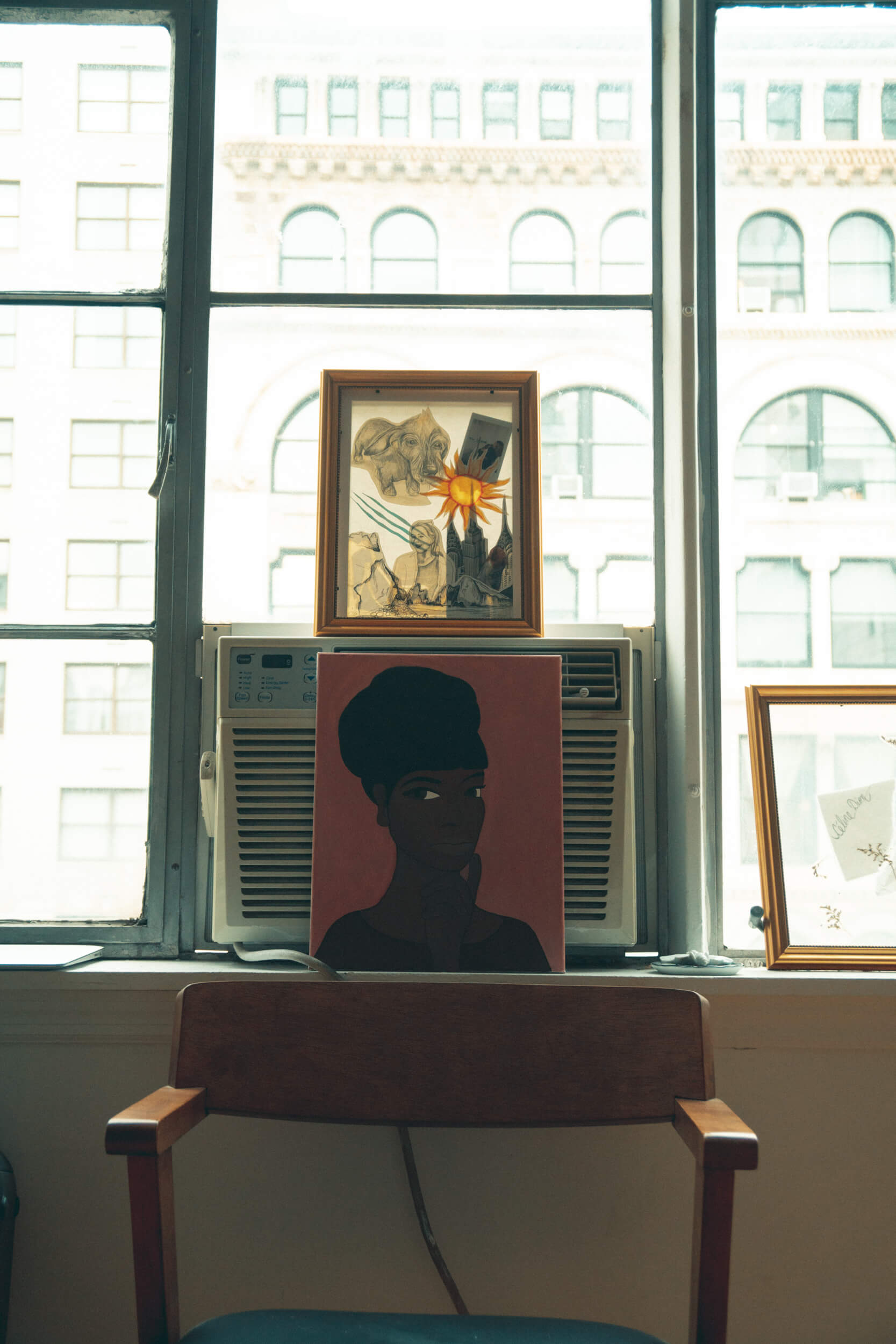
“I feel like the New York work ethic has helped, especially working from home, because it is so normal here and that does help.”
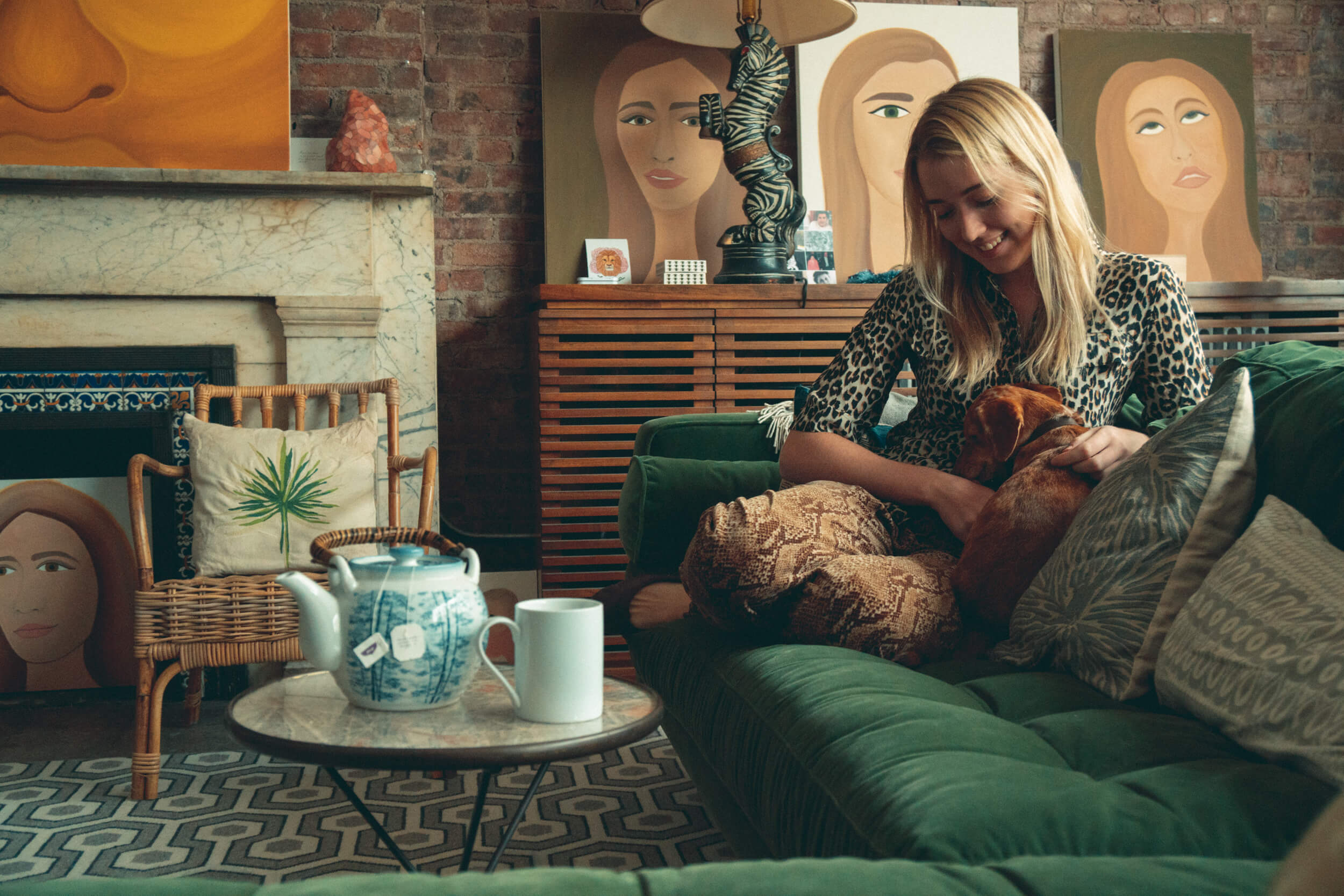
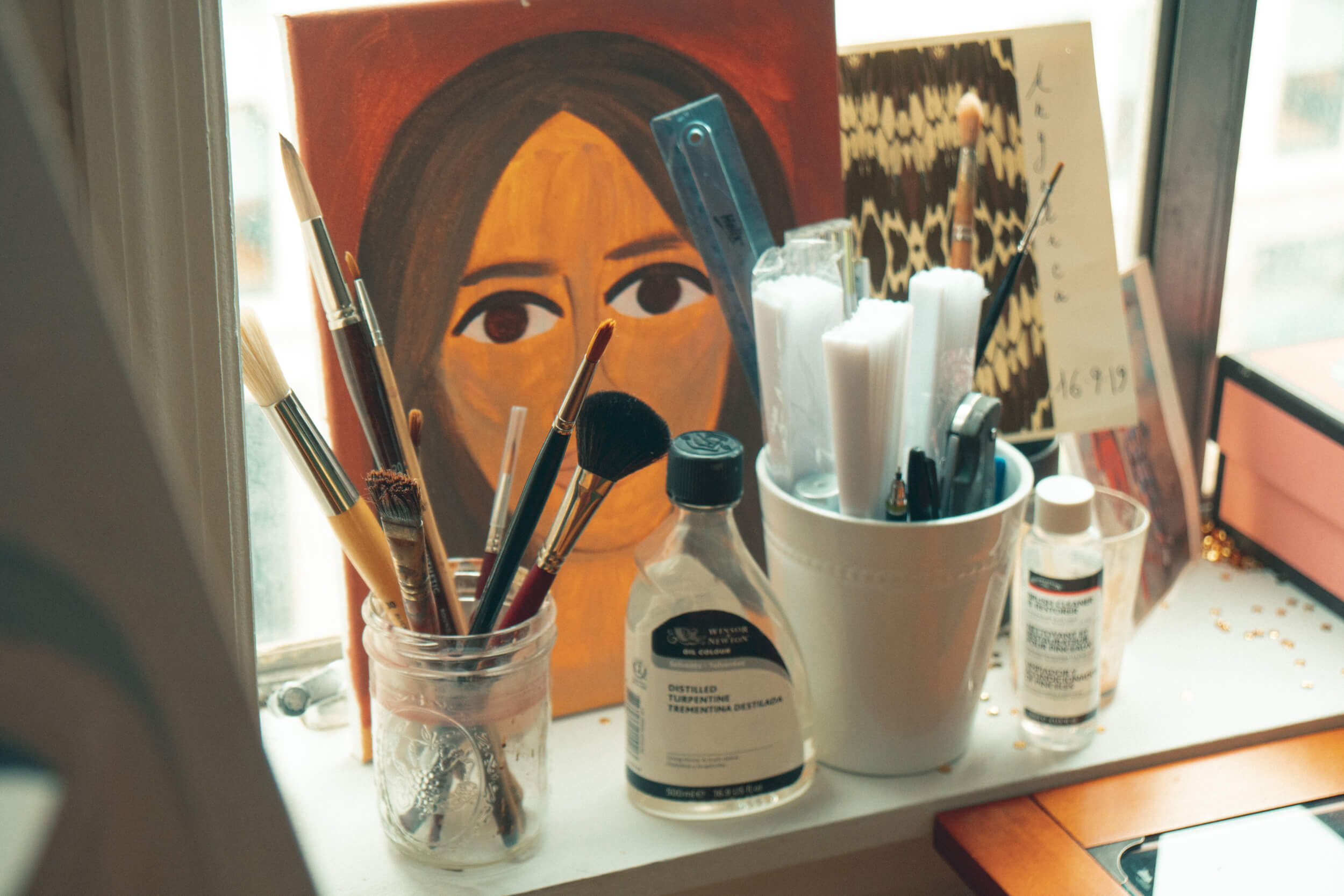
Speaking about your works, is there one that you are particularly proud of?
I’m proud of all of them. But one particularly proud of…the MET. That’s was pretty, pretty cool. I was sitting opposite someone at dinner who works for Vogue and she basically gave me a heads up, it was like, “Would you be interested in doing a meeting tomorrow? I think we are pitching you,” and I was like “Yeah, of course.” I had no contacts of what it was really that I’d been doing. And then I got an email the next day and I was like, “Ok, this is the thing.” It was cool because the direction was “these are the people, you do you.” There was just one of them that then said, “Can you change the clothes?” and that was it. It was amazing, they were the best people to work with. I was really proud of it because, you know, it’s the MET. And then also, I was doing a fragrance in a cosmetics brand called Queendom, and those two came out at the same time which was pretty cool.
Can you tell us about the message that you wanted to convey through your illustrations for Queendom?
When they approached me, first of all, it was before I’ve done like anything: I hadn’t done any collaboration yet, because obviously, a thing like this takes a long time, and I thought that was cool because they have like gone for it. Kendall Jenner regramming one of my drawings was the only thing that had happened workwise apart from what I was doing for Porter Magazine, and that, of course, was more of a job.
I thought what was really cool was how authentic it all was because I find it annoying when for instance brands decide to put a message on a T-shirt, it feels like trendy and that’s what annoys me the most, fashion co-opting feminism as a trend.
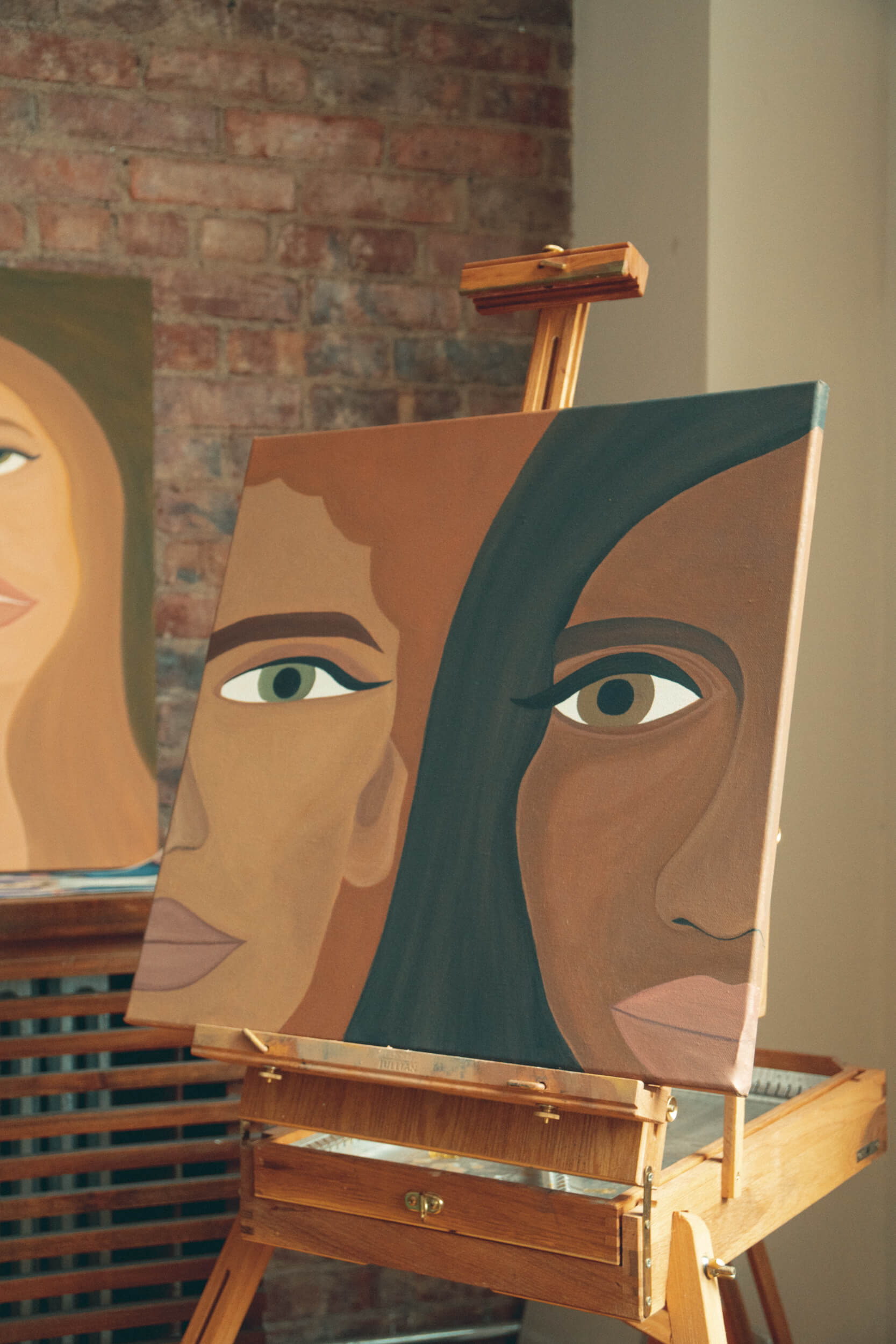
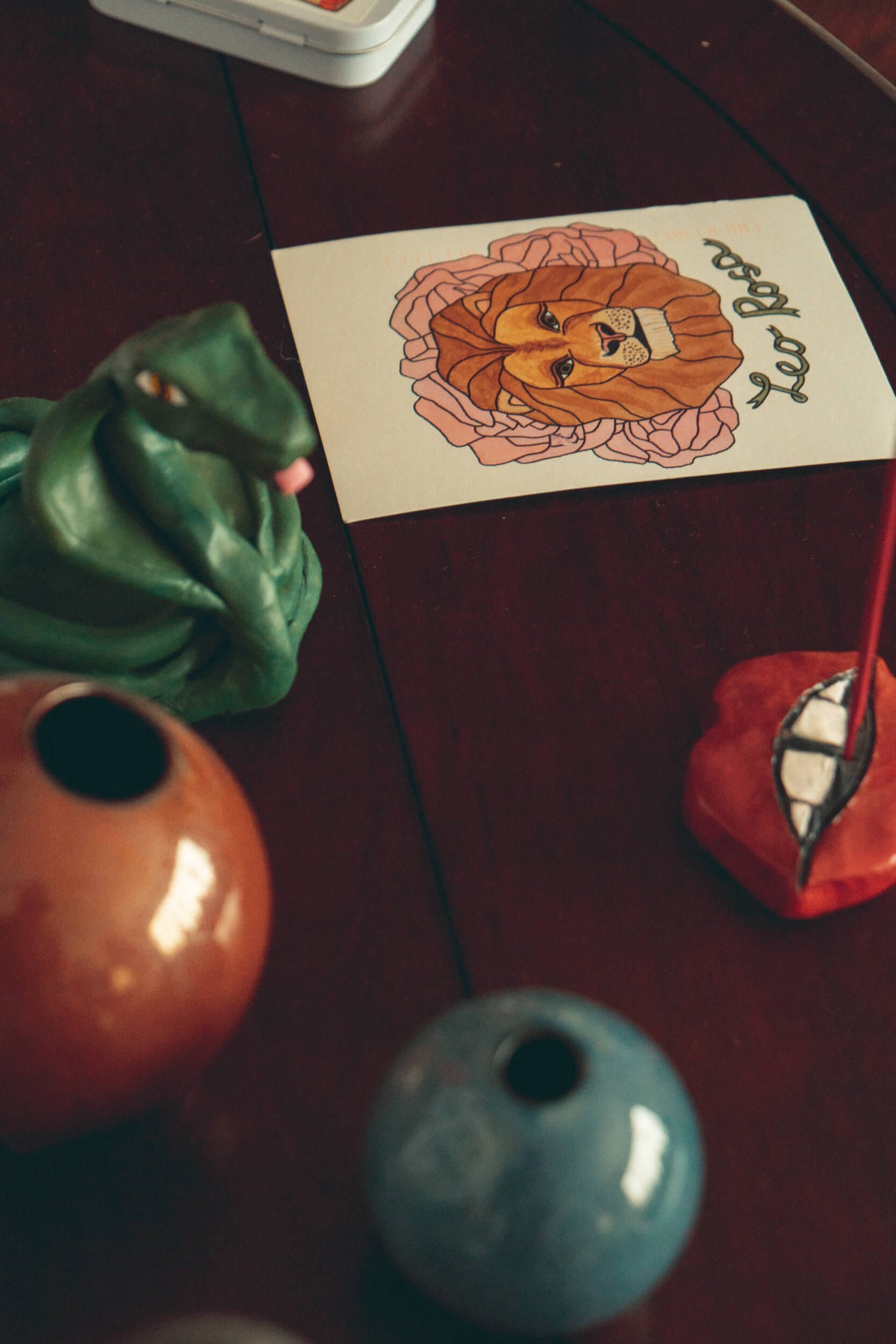
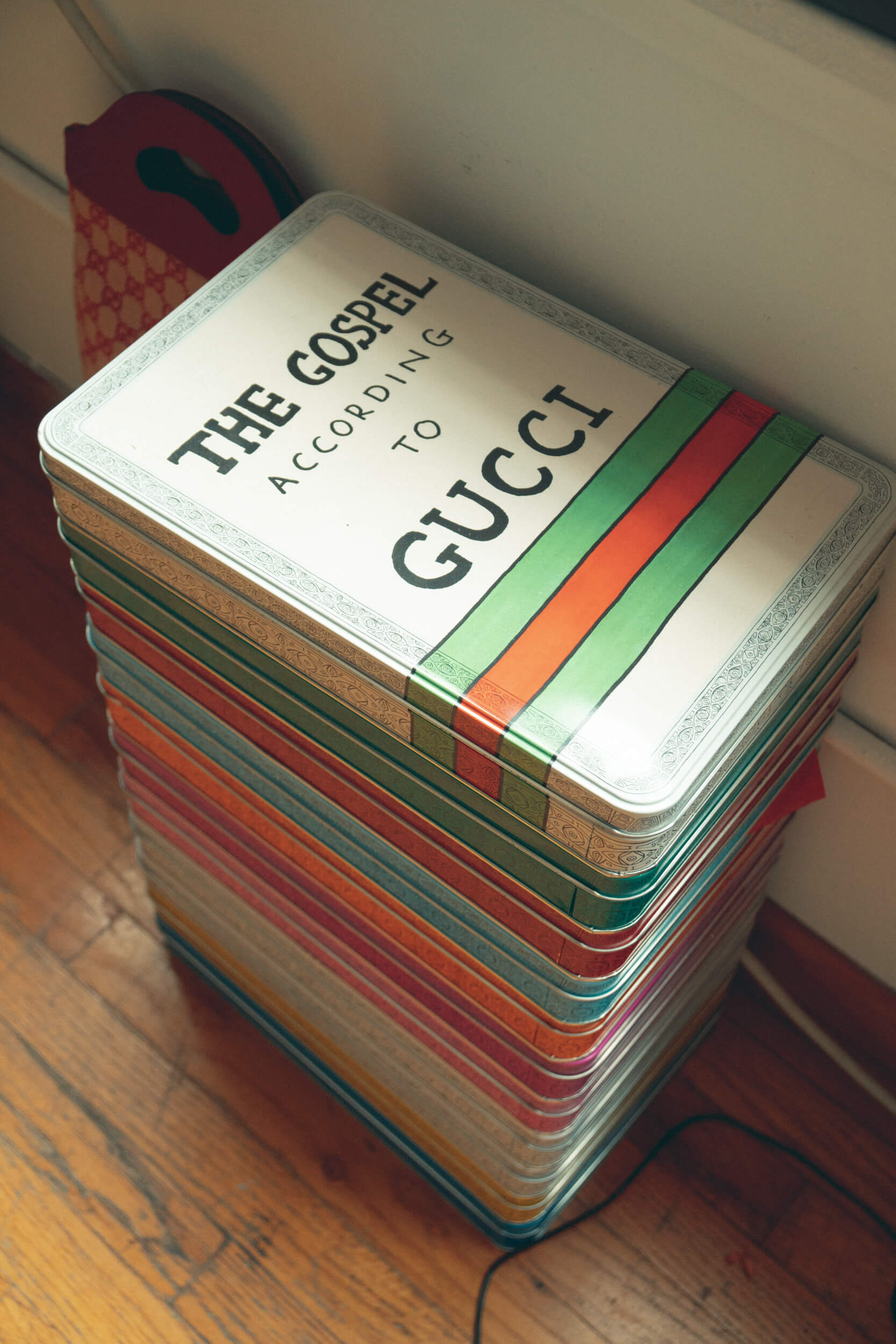
“I was really proud of it because, you know, it’s the MET. And then also, I was doing a fragrance in a cosmetics brand called Queendom, and those two came out at the same time which was pretty cool.”
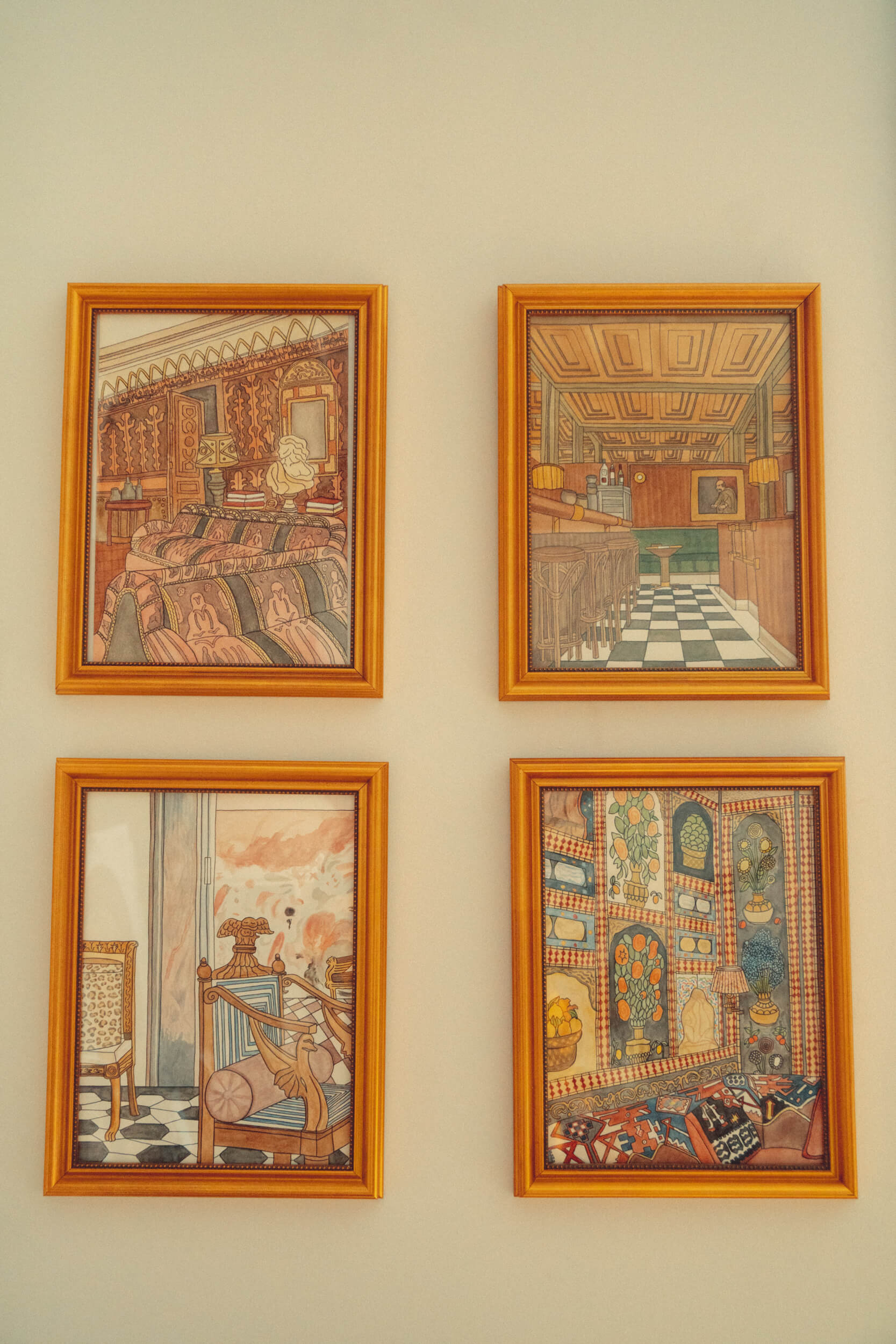
So when I first got the initial deck from Queendom, with what their idea was, first of all, I liked all my drawings that they cut up and used, which was flattering, like, “Ok, they really want to do this with me” because someone has gone through the trouble of doing what sometimes I have to do on Photoshop and I know how long it takes.
Their message was so authentic and sincere and how they were choosing to approach feminism as a brand; for example, 10% of all of the sales would go to the charities that are associated with the causes that each of the iconic females stood for; the amount of care that’s going into that, it’s fantastic, because you could tell that they actually cared about not only the females but the actual causes and the brand is so thoughtful, genuine, and they do not try to co-opt on trends. The concept of a brand trying to approach feminism with 10 individual females from different fields and inspire through their stories was such a cool way to directly show how women are fab.
Do you have a dream collaboration?
No, because I guess anything could happen. I used to say it would be with brands that were so uninvolved in fashion, for example, something to do with bandaid, plasters, or household good, that kind of thing. But I don’t know, I guess I just like so many things. Any collaboration can be a dream.
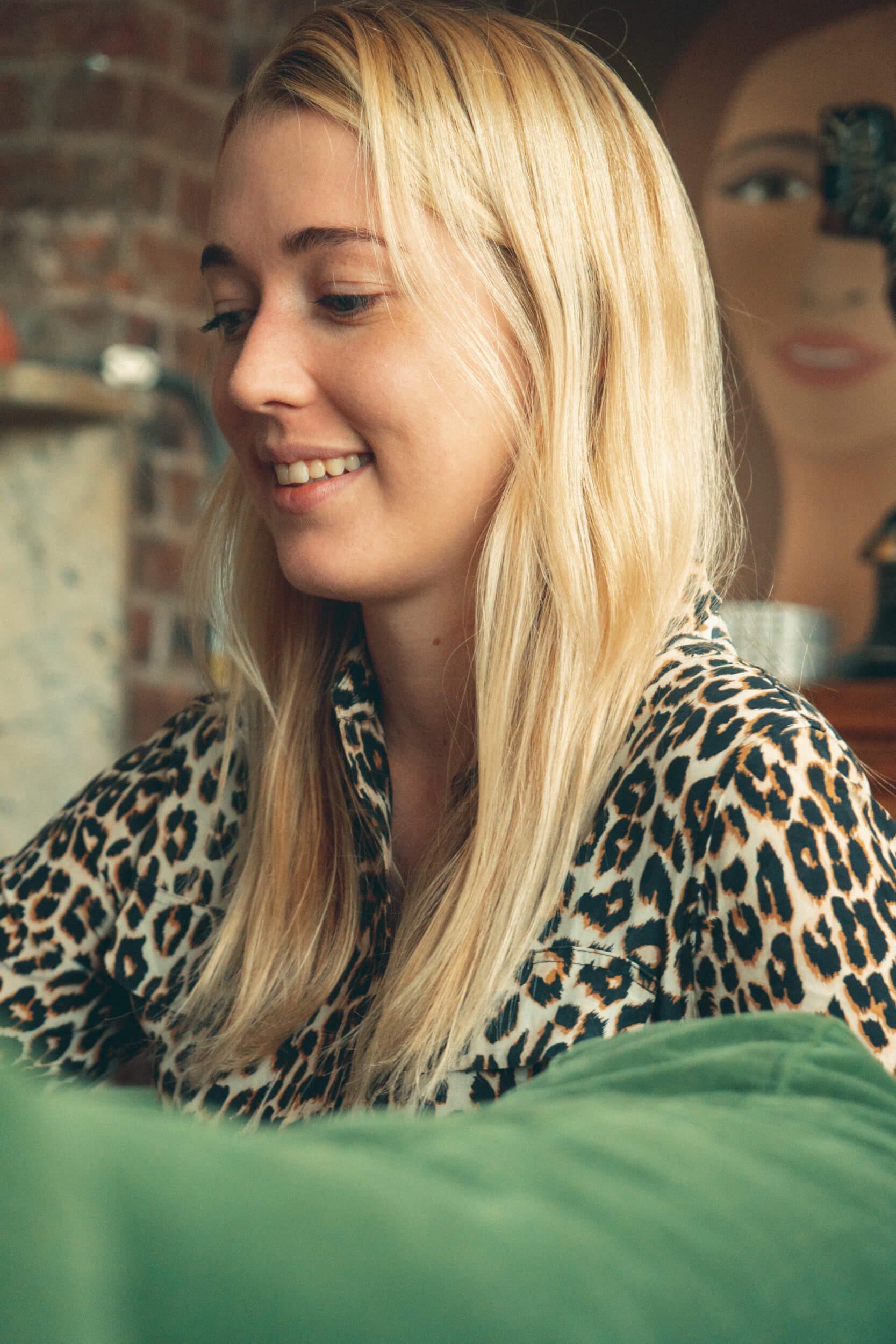
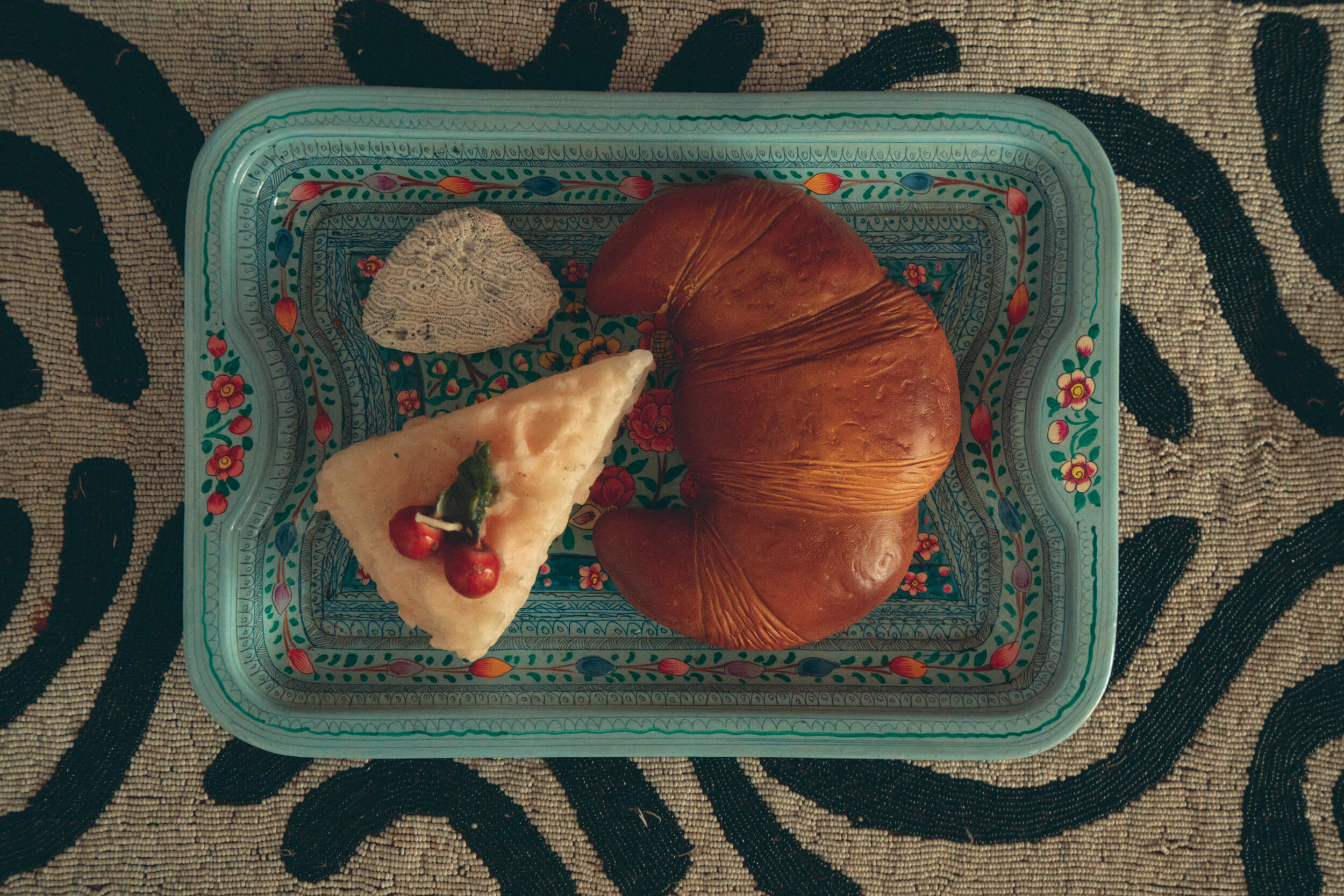
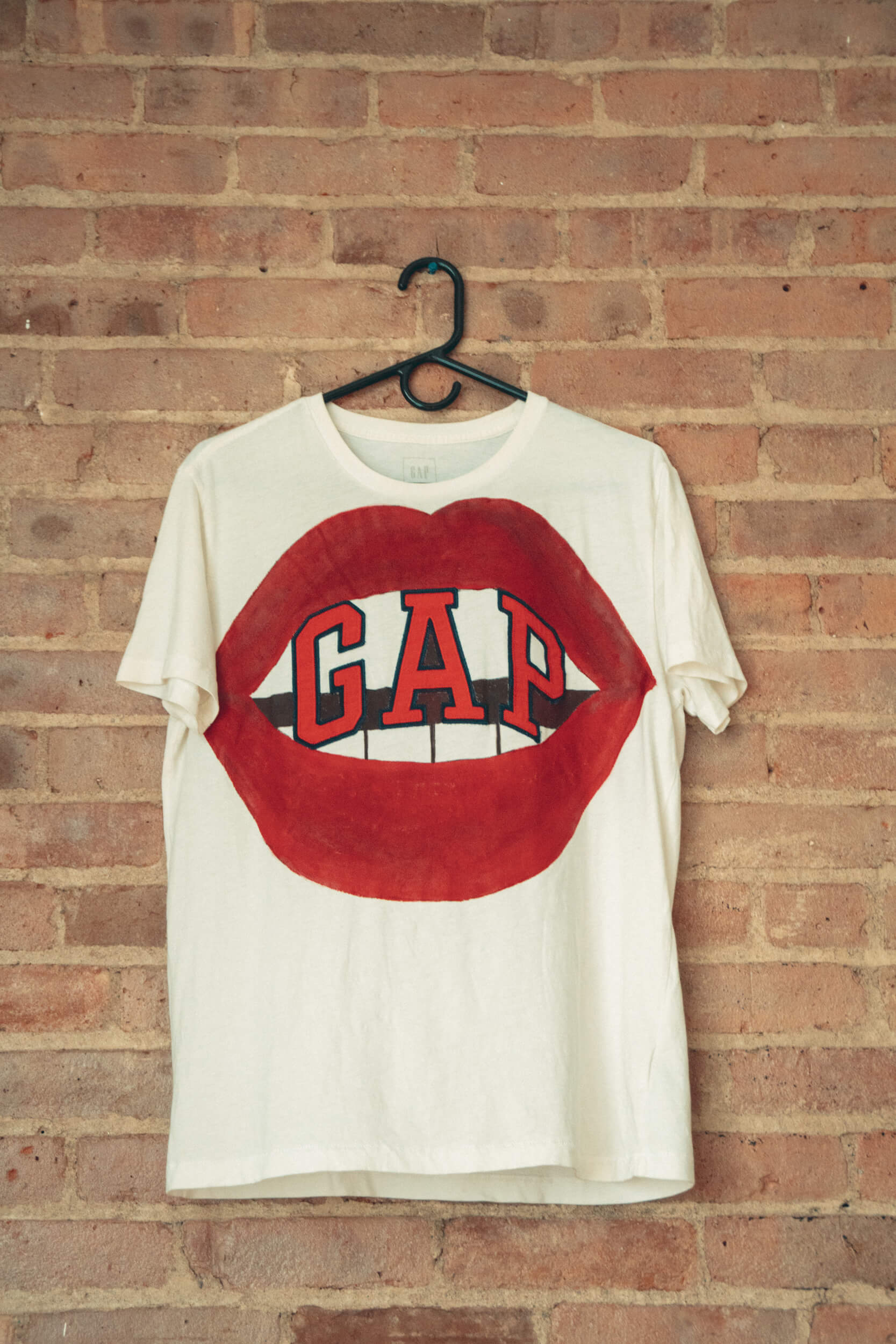
Is there a woman or maybe more than one that has inspired you both for your personal and professional life?
One of the women is Elsa von Freytag-Loringhoven, I learned about her at university, she was a proto-feminist, a friend of the surrealists, of Duchamp, I just thought she was so cool because she didn’t fit into the gender role of a woman at that time and she broke boundaries when they weren’t even thought to be able to be broken. So, she’s a super inspiring person. And also, one reason why the university was not a bad idea. [laugh] Then so many female artists, obviously Frida Kahlo too, I also had a back brace, it was less medieval than hers but I could identify with her. Also, kids are very inspiring actually: I love it when I’m able to sit and paint with my little cousin Domino.
A child’s imagination knows no boundaries. And then my mum who’s done so many things and has taught me that you can do so many different things and that you don’t have to follow just one career path in your life. And also my sister and I were very much raised in a kind of “You can do anything,” which first of all I think made us want to succeed more because it wasn’t “You have to be the best” it was “You can do anything.”
If you could choose three people that you would love to draw from the pop culture that you haven’t done yet, who would you choose?
I love Lizzo, she’s so beautiful, she’s so cool and her message as well. I’m becoming more aware of drawing or painting people with a natural and stronger message. Also, Zendaya, and Hunter Shaffer, I was obsessed with “Euphoria,” it was amazing, such a cool TV shows for young people and parents to like. I think it was the most accurate depiction of youth, like “Skins,” but more realistic.
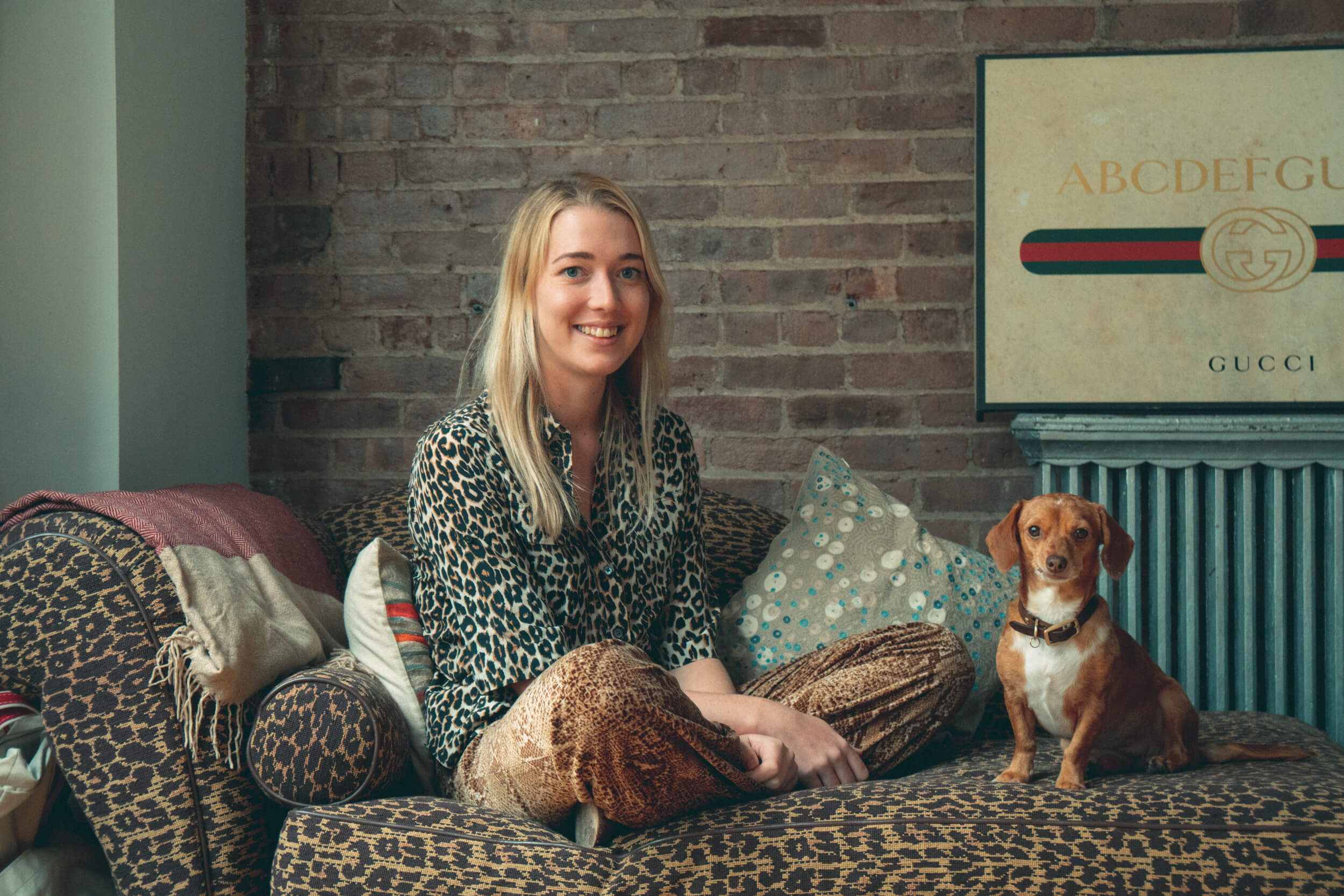
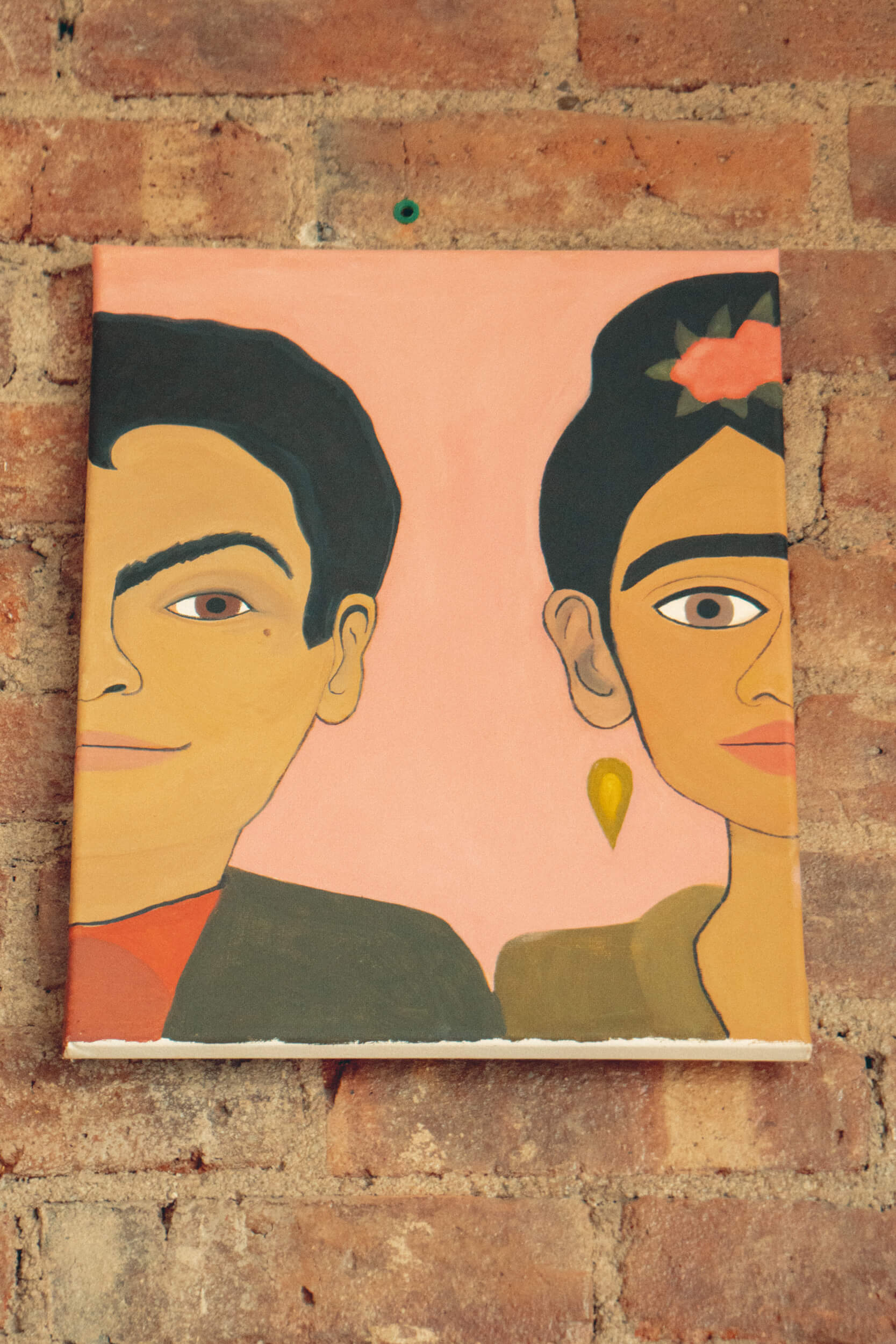
You
can
do
anything.
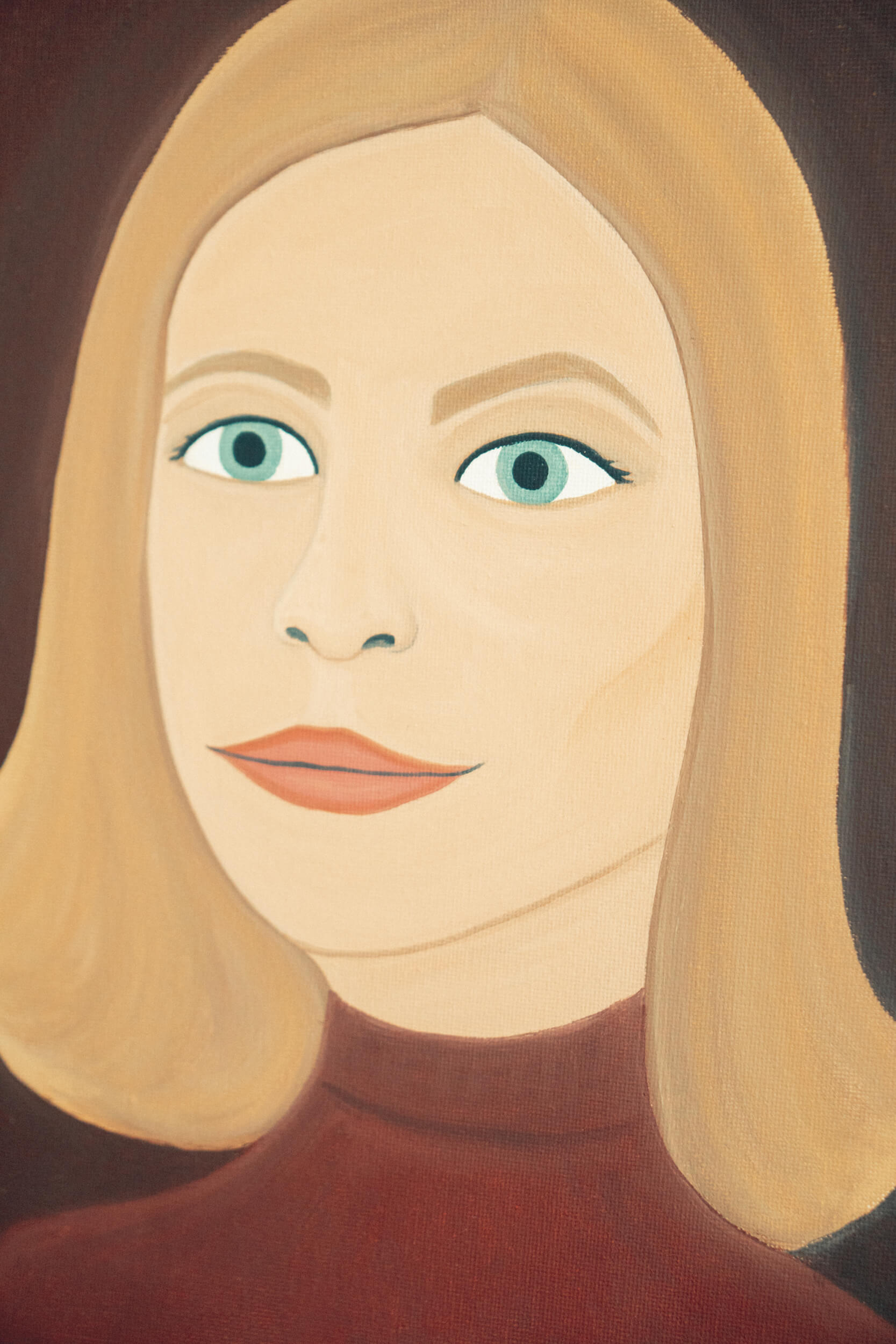
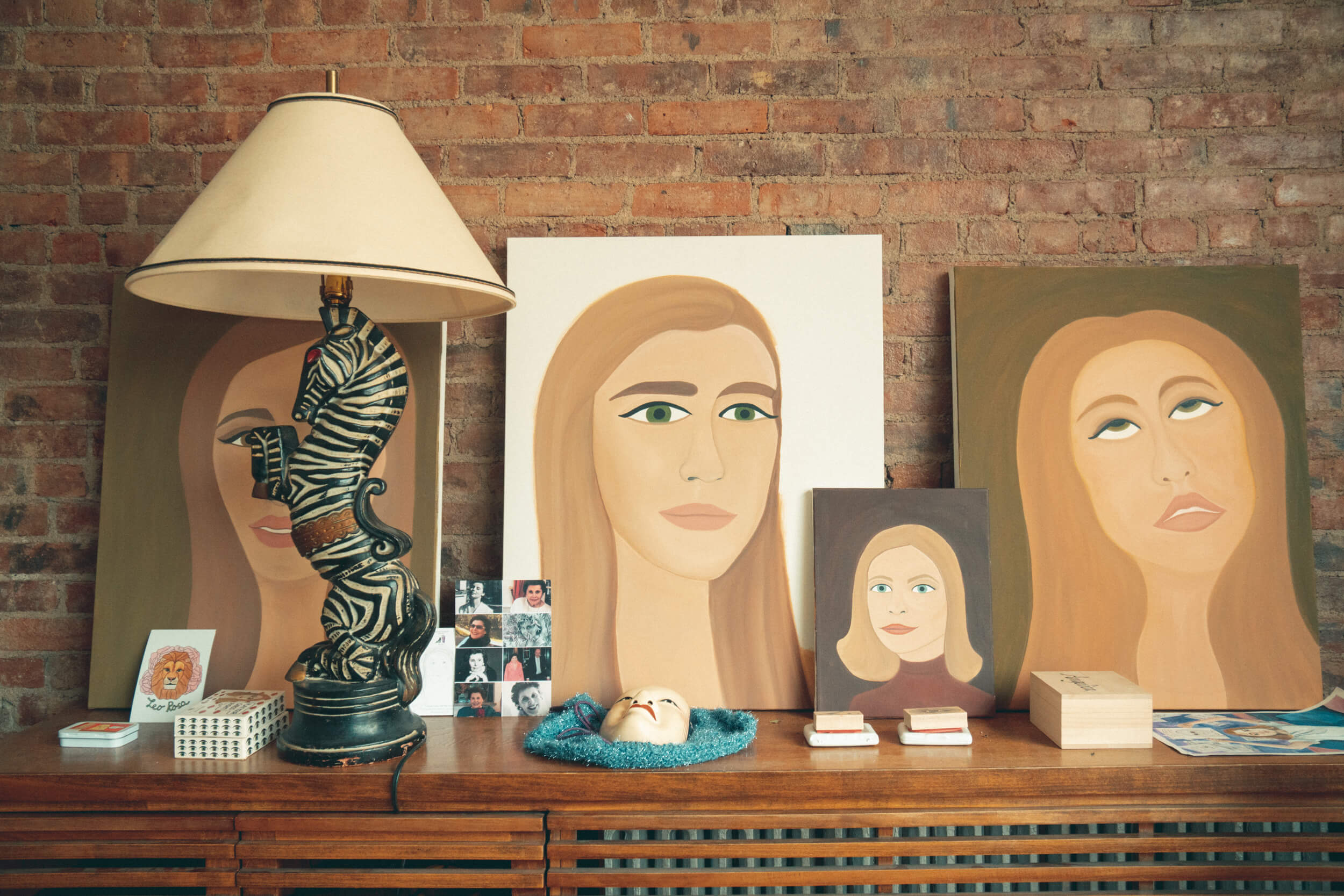
Are there any of your drawings that you are particularly proud of or that were particularly difficult to come up with?
Difficult to come up with, no, I literally can’t describe it, I can maybe just sit down and be like…and then it will come into my mind so from sitting there to the conception.
I’m slightly more proud of ones that maybe are a little bit deeper like the ones that maybe do touch a point in politics, even though obviously, you can get the white supremacists backlash, I don’t know where these people are following me from, or they’ve probably just come across it, which is honestly, “If you don’t like it go away,” but those drawings, I feel proud of in a sense because it makes me feel like I’m taking a more active role with my art; that being said, those are also very difficult ones because it is so tricky to engage since most of my work is humorous, and those are the ones when I send a lot of messages to my sister, asking her to help me, like, “How can I make sure that this is perceived in a correct way?” I’m proud of those.
What’s art for you and what does “art” mean right now?
I think art is a lot. A lot is going on right now, it feels like it’s kind of trendier in a way than it has been for a while. I don’t know, I suppose fashion is art, art is art, art is cinema, I guess I’m now understanding that art is a much broader term. When I was younger, I didn’t understand the general nature of the term “art” or maybe the term has also become more general in its nature. I feel like it’s everything.
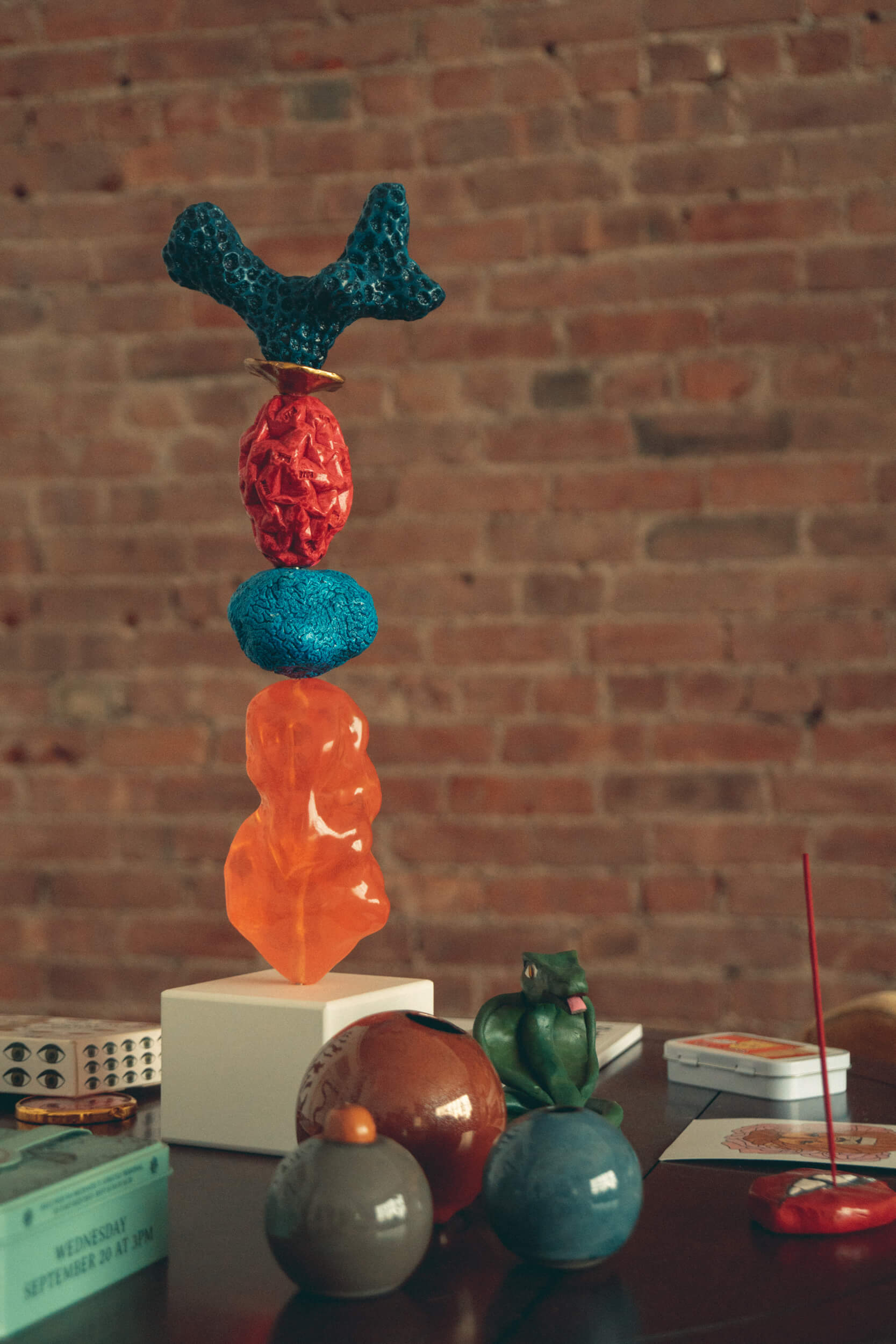
Art for me is anything that someone makes. And if you think about it like that it is actually a very broad term: you can take a selfie and that could be art, and probably that is art, isn’t it? And I guess that’s cool but I also think that art right now is in a way also making people less creative in a sense.
Art right now doesn’t just belong in a museum.
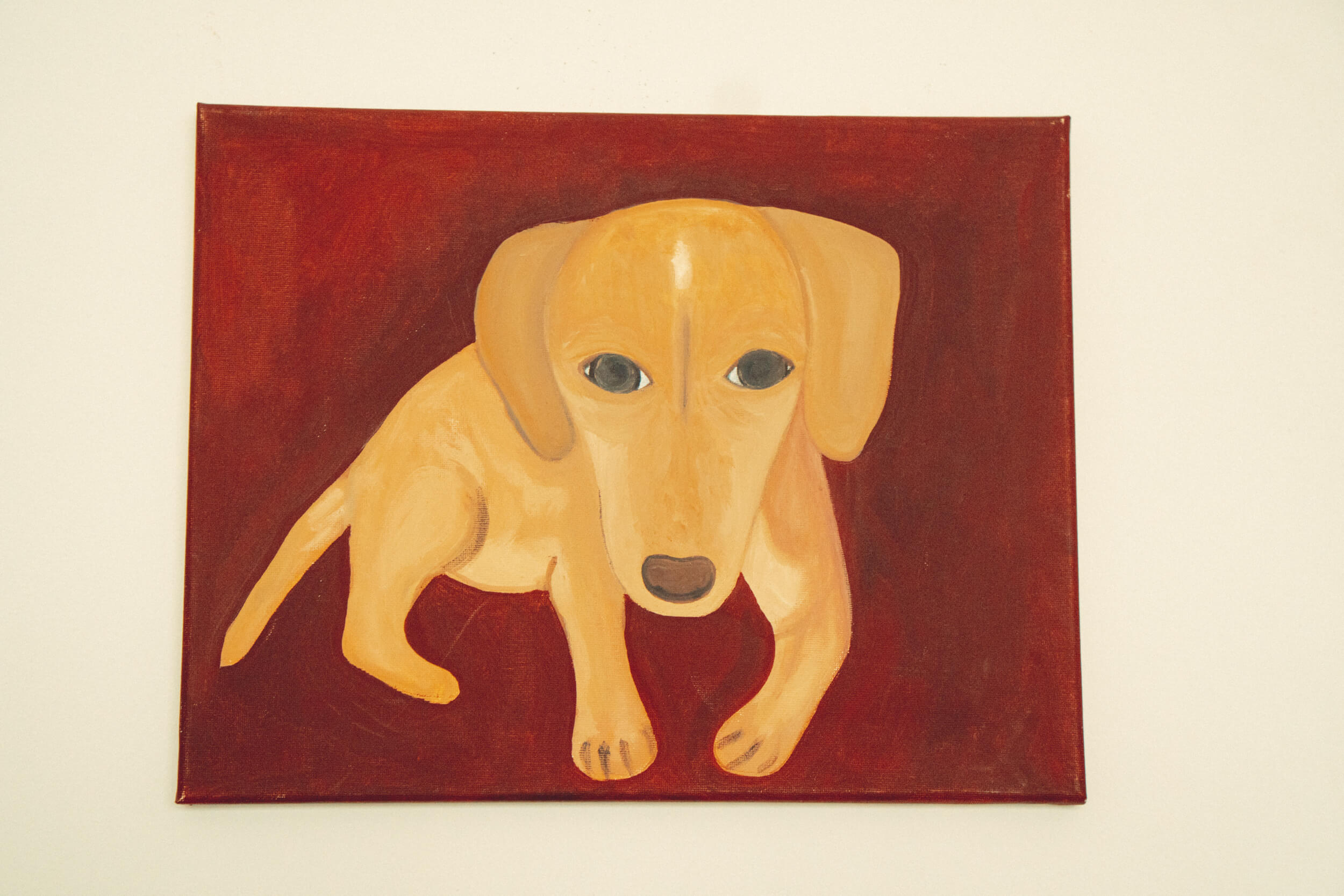
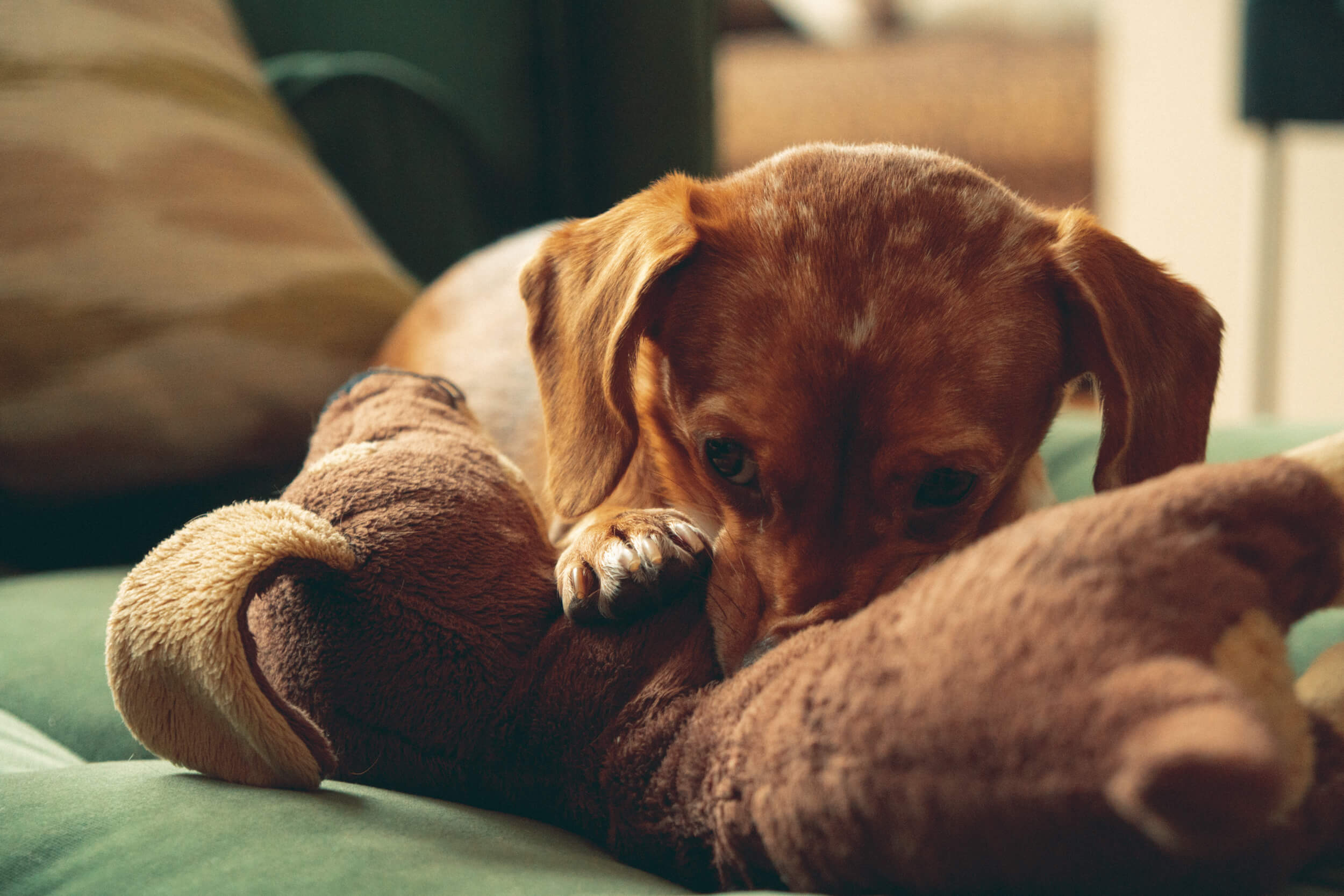
Have you ever had an epic-fail while doing an illustration?
Yes [laughs]. I have Epic fails when I try to do teeth, people end up looking so scary. The maximum I can do is to draw two tiny teeth but I can’t do a smile, a full tooth grin I really can’t do.
What’s the book on your nightstand?
It’s not existent, because I don’t read before going to sleep [laughs]. But the book that I’ve recently read and that I really liked is called “Inappropriation” by Lexi Freiman: it’s a really funny kind of commentary on the satirizing culture of appropriation basically the difference between kind of life issues and non-issues through the eyes of this teenager in Australia.
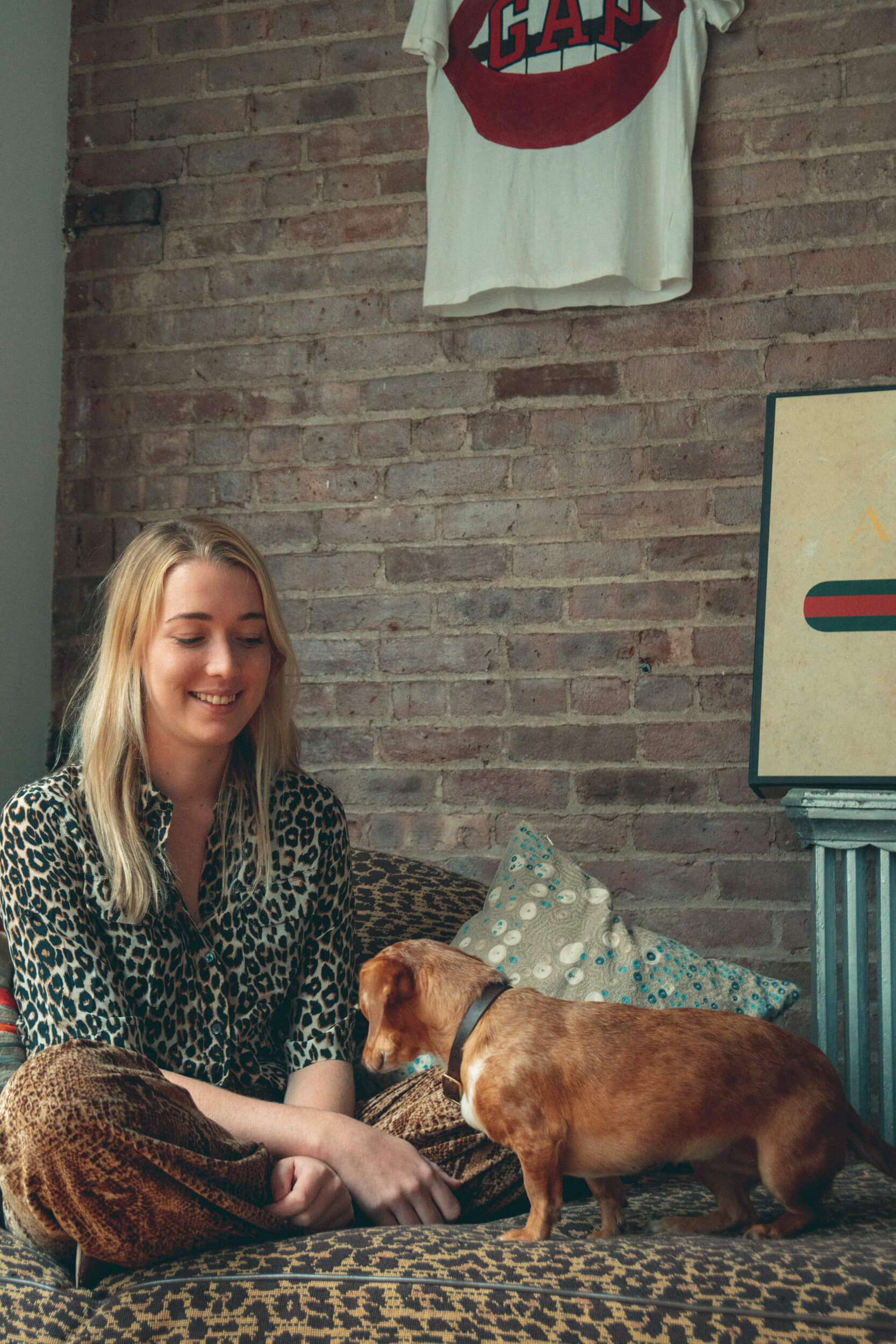
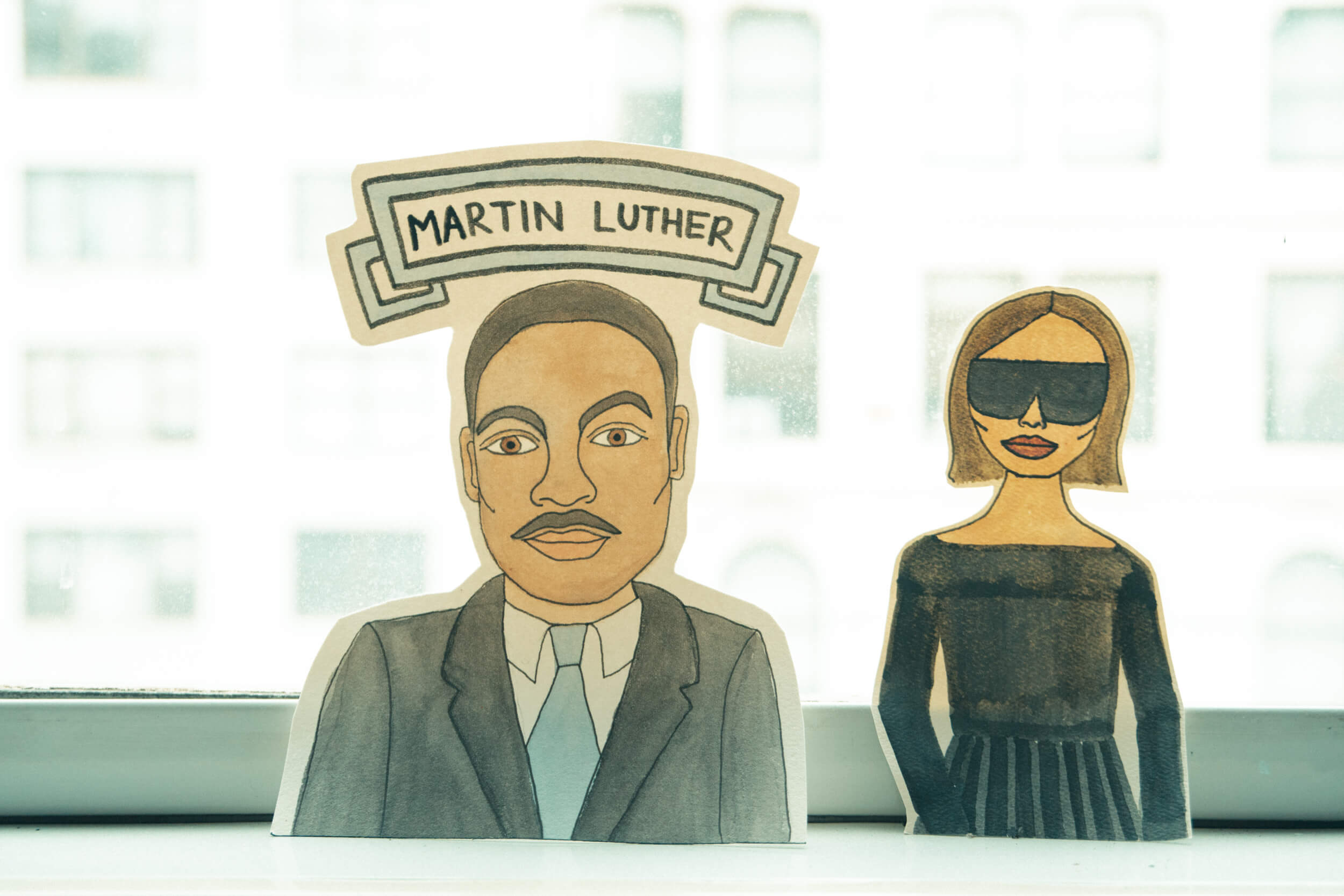
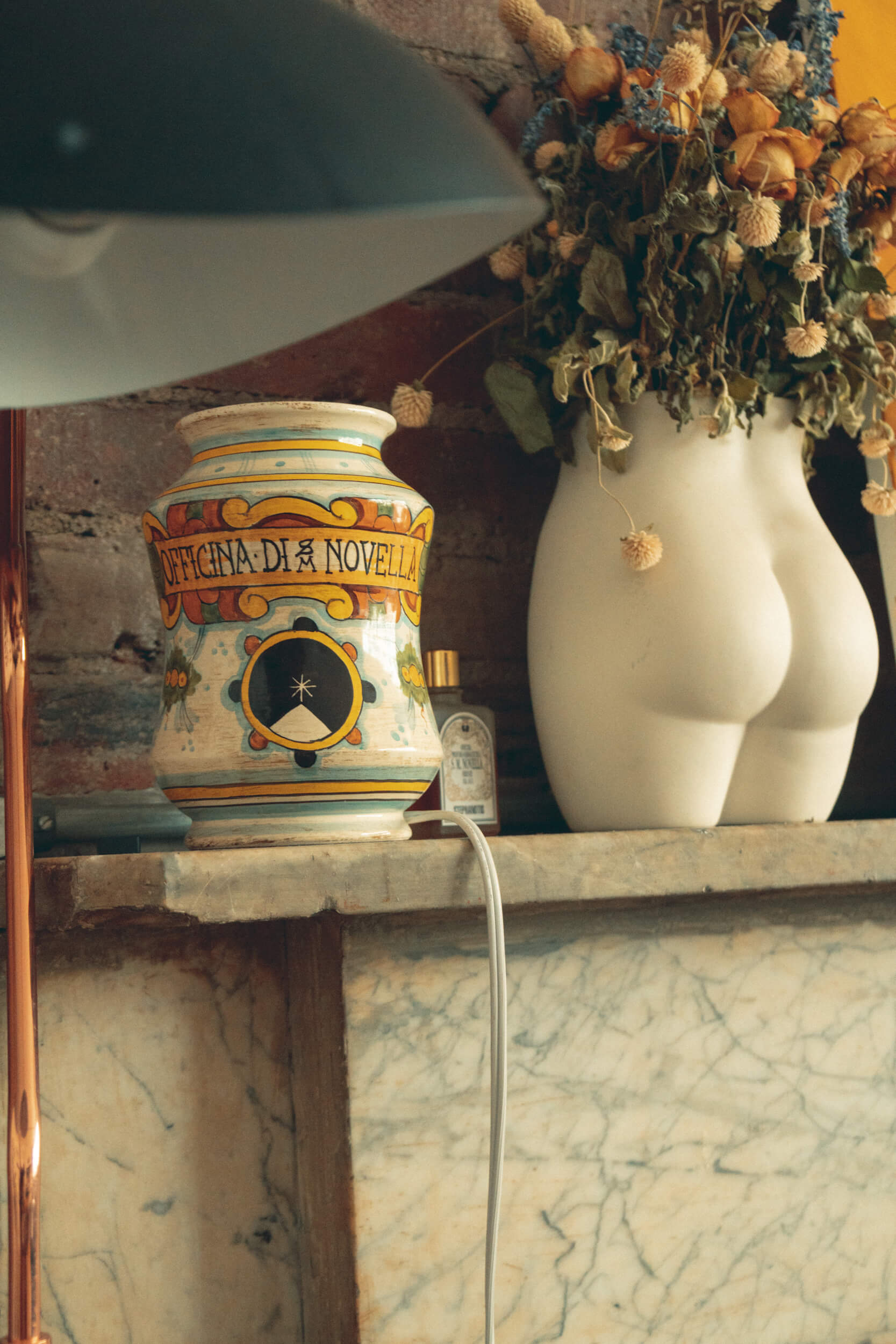
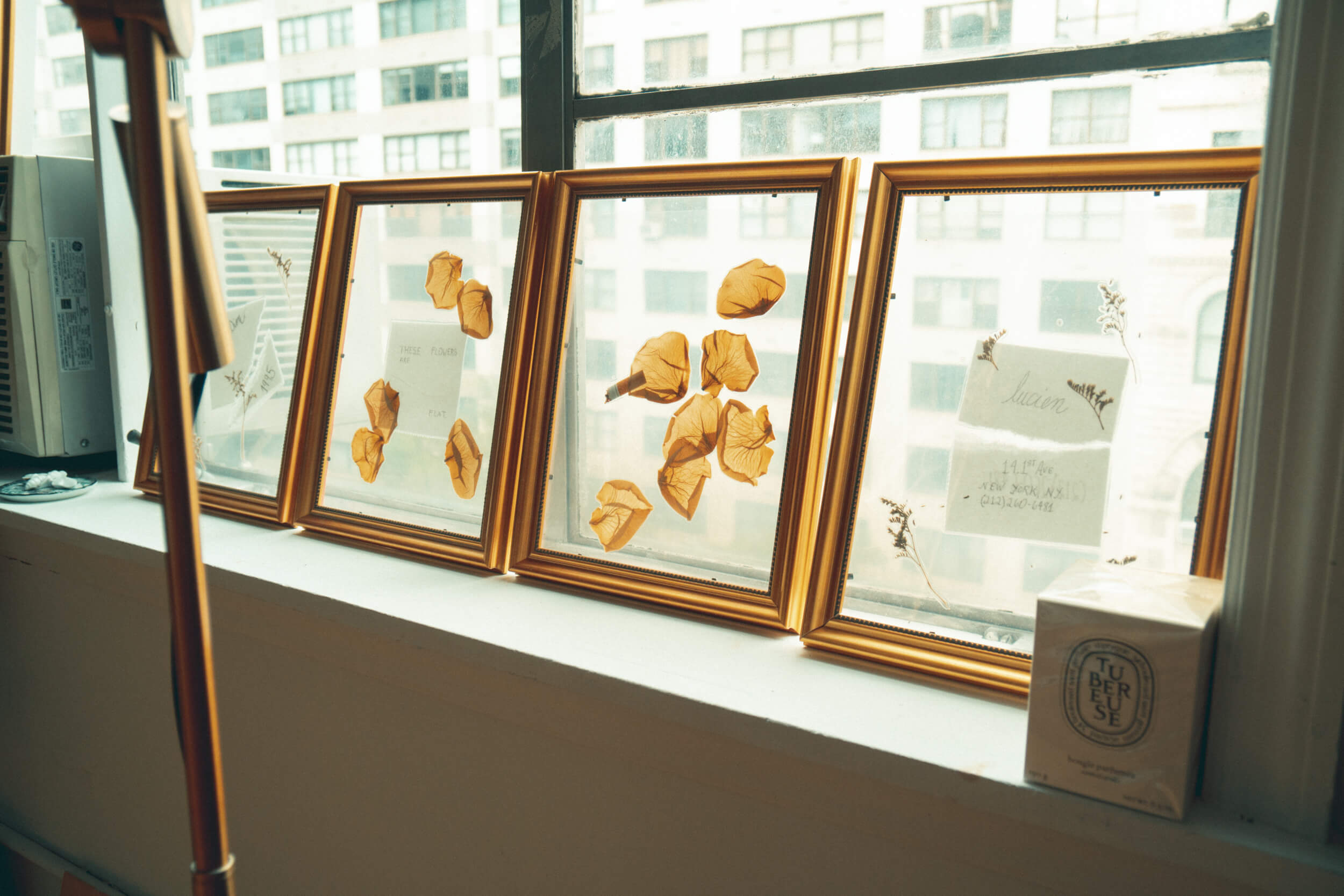
What’s your superpower?
Well, I can reduce people’s faces to lines, that’s what I do through my illustrations. I kind of just look at someone and I can outline them, which I quite like. And the one I wish I had is flying or being invisible. I think flying because being invisible doesn’t actually mean that you can walk through walls. Someone’s clarified this to me not long ago. [laugh]
Is another book in your plans?
I don’t know yet, I have some ideas, I get really excited about them and then I have other work, so I forget about them and the ideas I have are kind of time-sensitive: I’d love to do one but it would have to come out around Christmas and I normally think about this one when it’s too late, but it’s something I would like to happen. I need to get the timeline better.
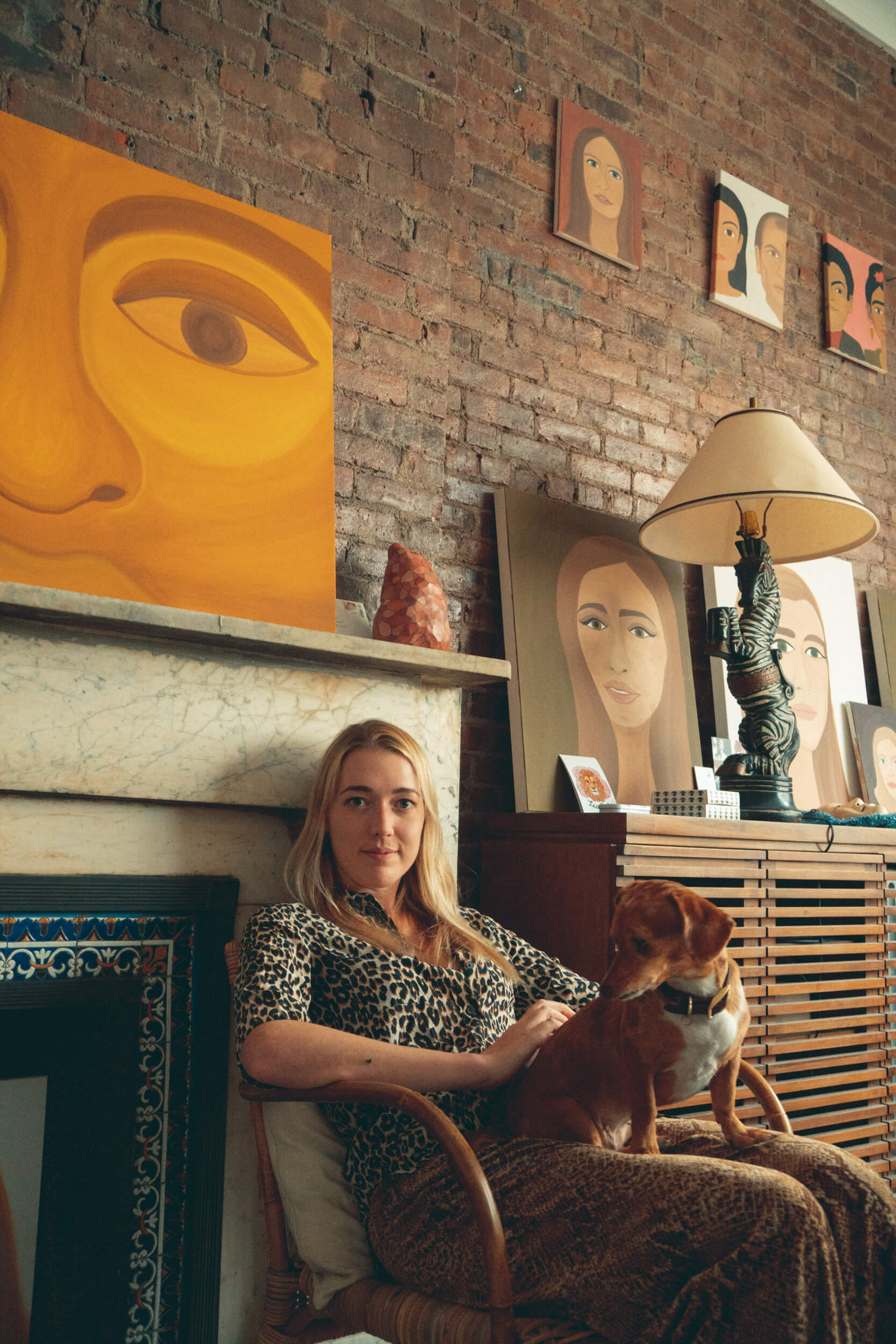
“I can reduce people’s faces to lines, that’s what I do through my illustrations. I kind of just look at someone and I can outline them, which I quite like.”
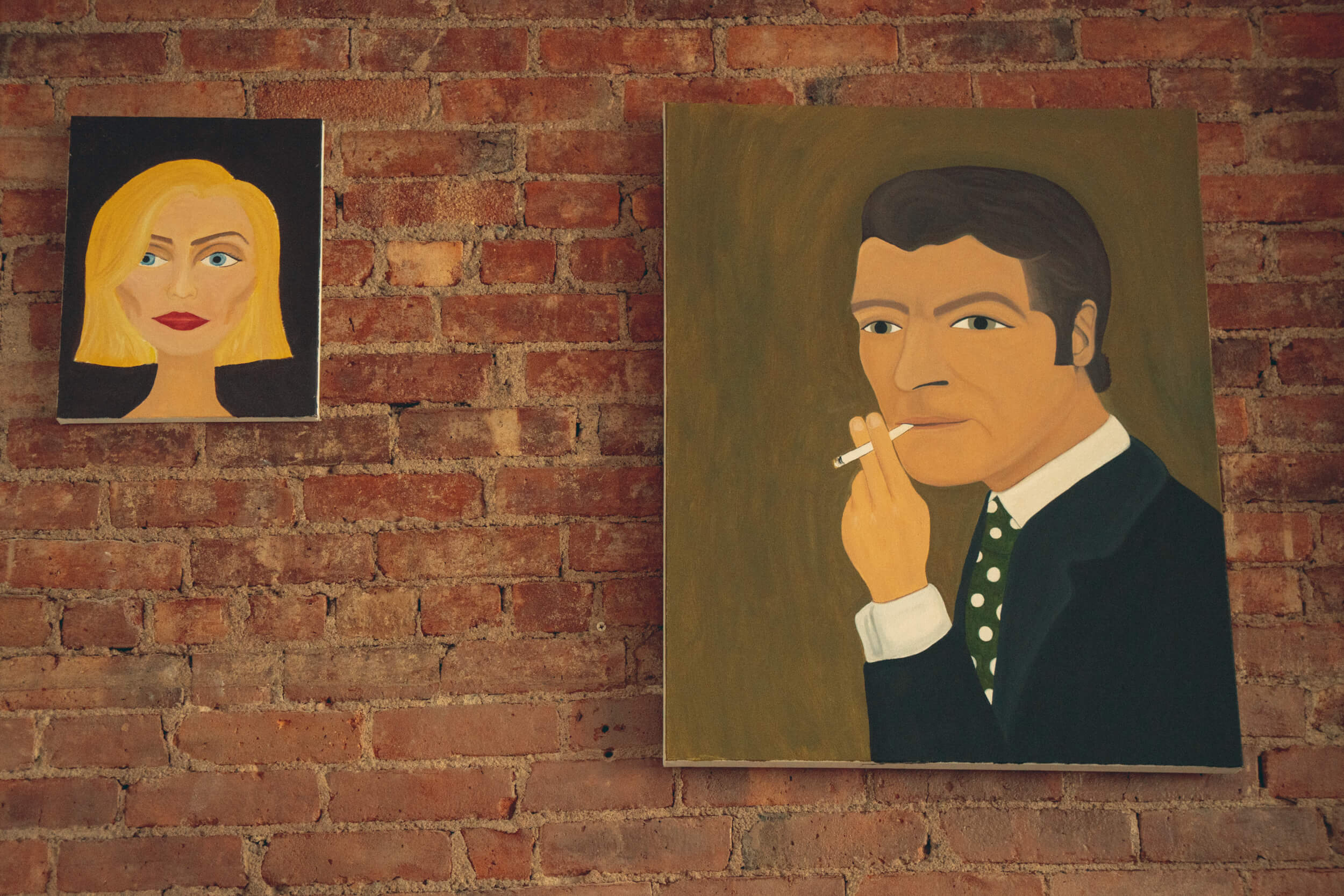
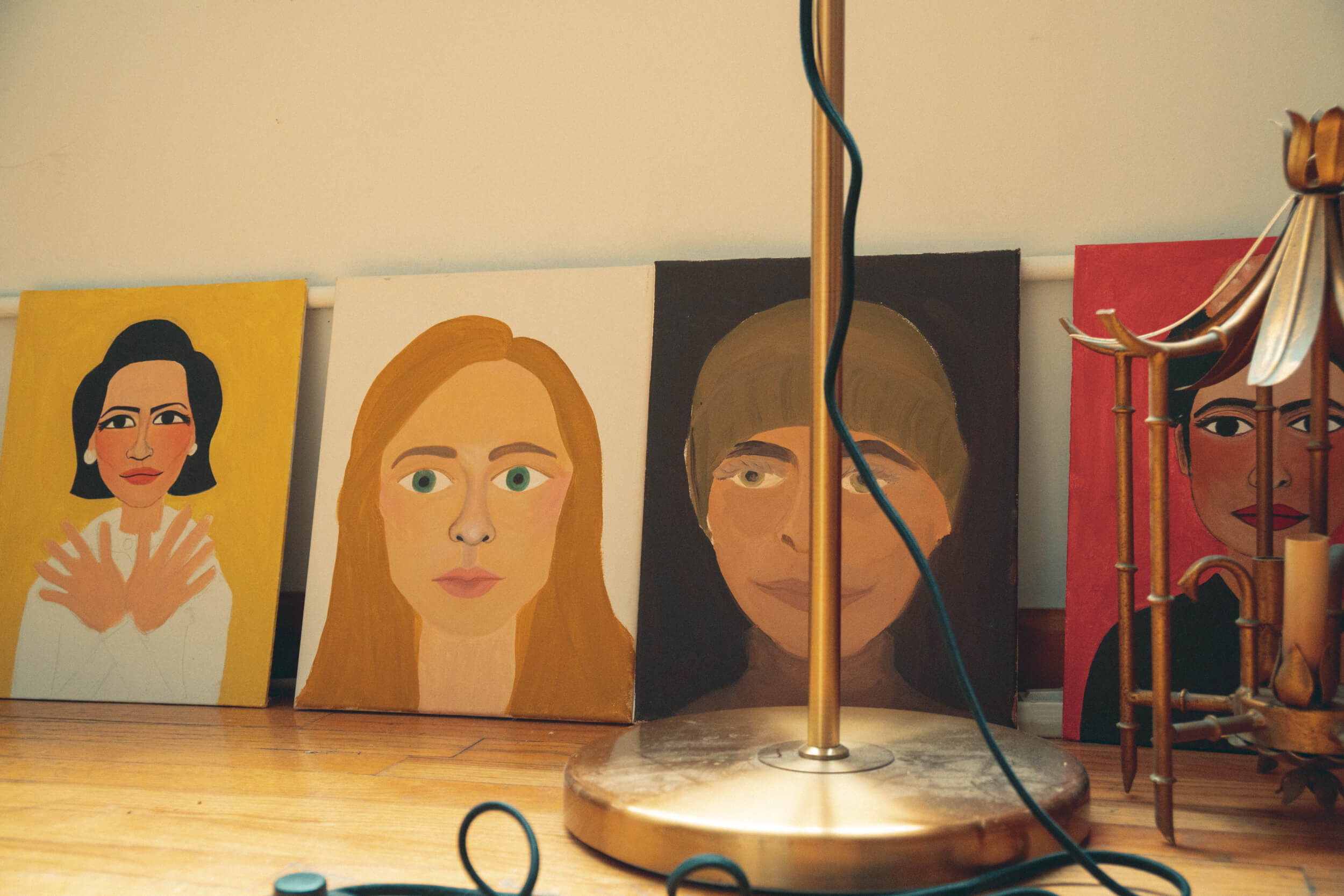
If you weren’t an illustrator, what would you be?
God, I don’t know. You know where I wouldn’t be? Working in an art gallery because that’s the reason why I said, “I’ve got to make this happen, I’ve got to make this freelancing thing happen” because I’m not cut out for the art gallery. After two internships, I knew it wasn’t the work for me. Also, because I think I couldn’t be in sales and I realized that working in a gallery was essentially being in sales, and from my shop assisting job, I had understood I was very bad at it.
You make people laugh and smile through your illustrations but what makes you laugh the most?
Anything. Some of my friends are very funny, TV shows such as “Curb Your Enthusiasm” and “Arrest Development;” I also watch a lot of stand-up comedies, and I like listening to podcasts as well, that’s something I love.
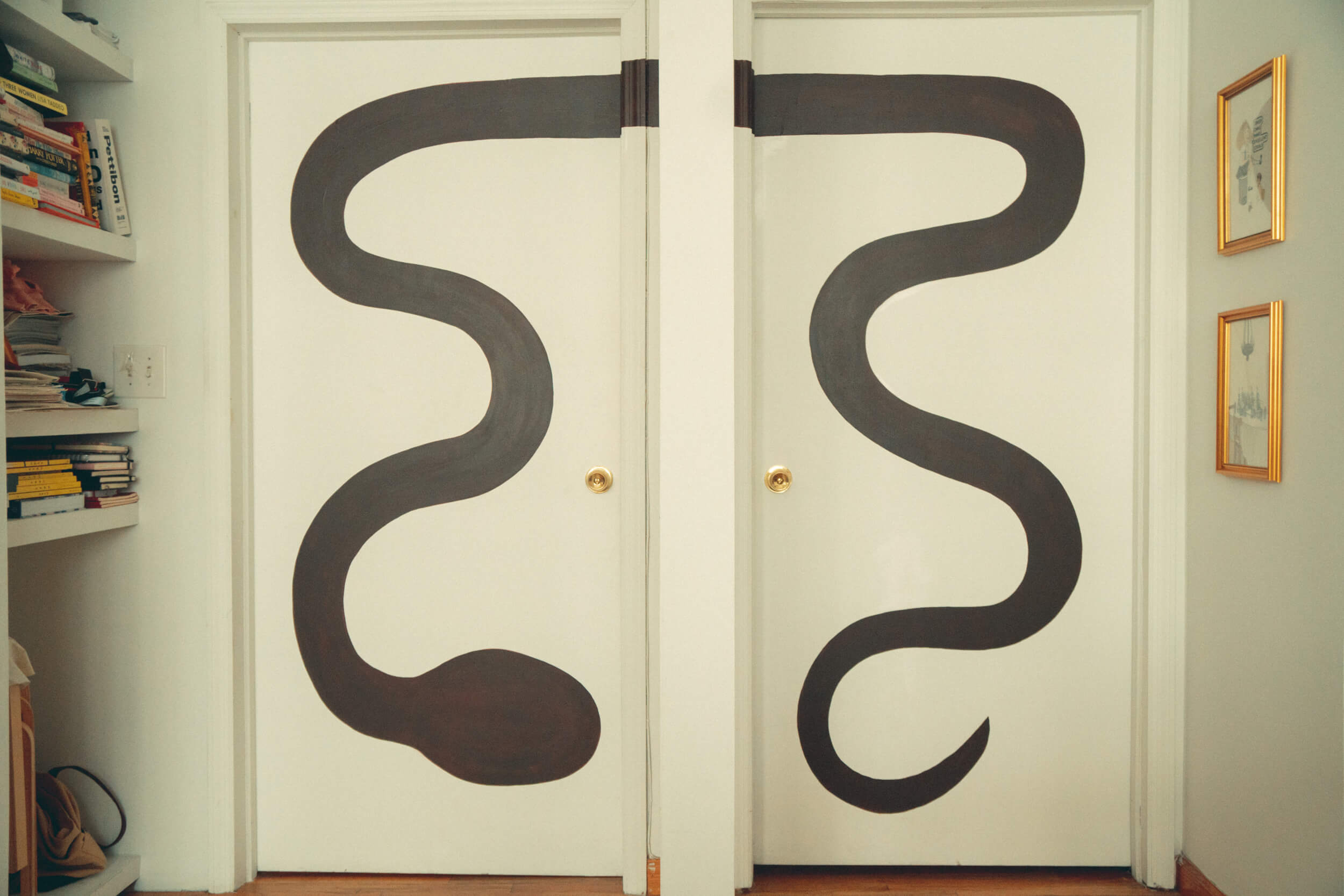
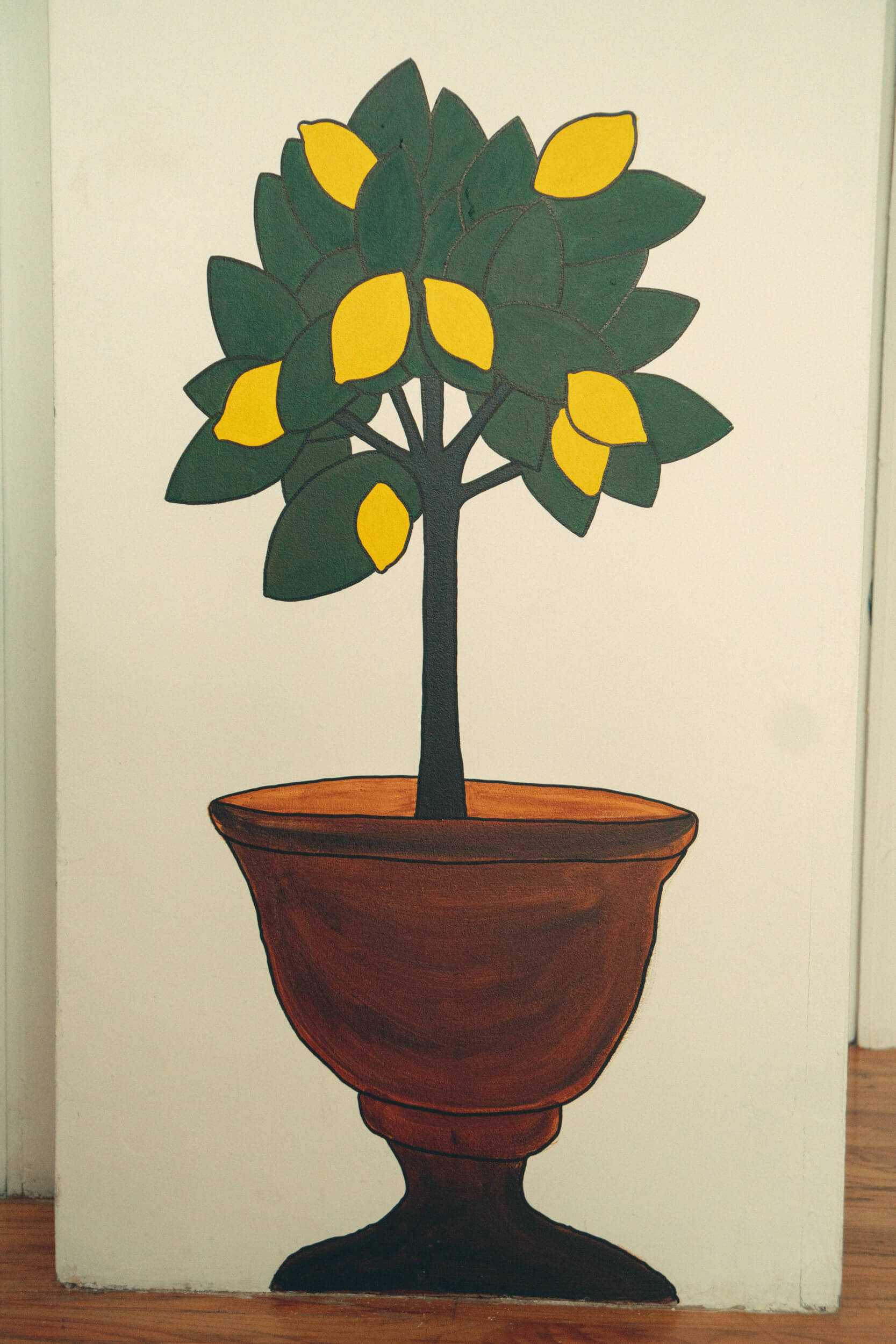
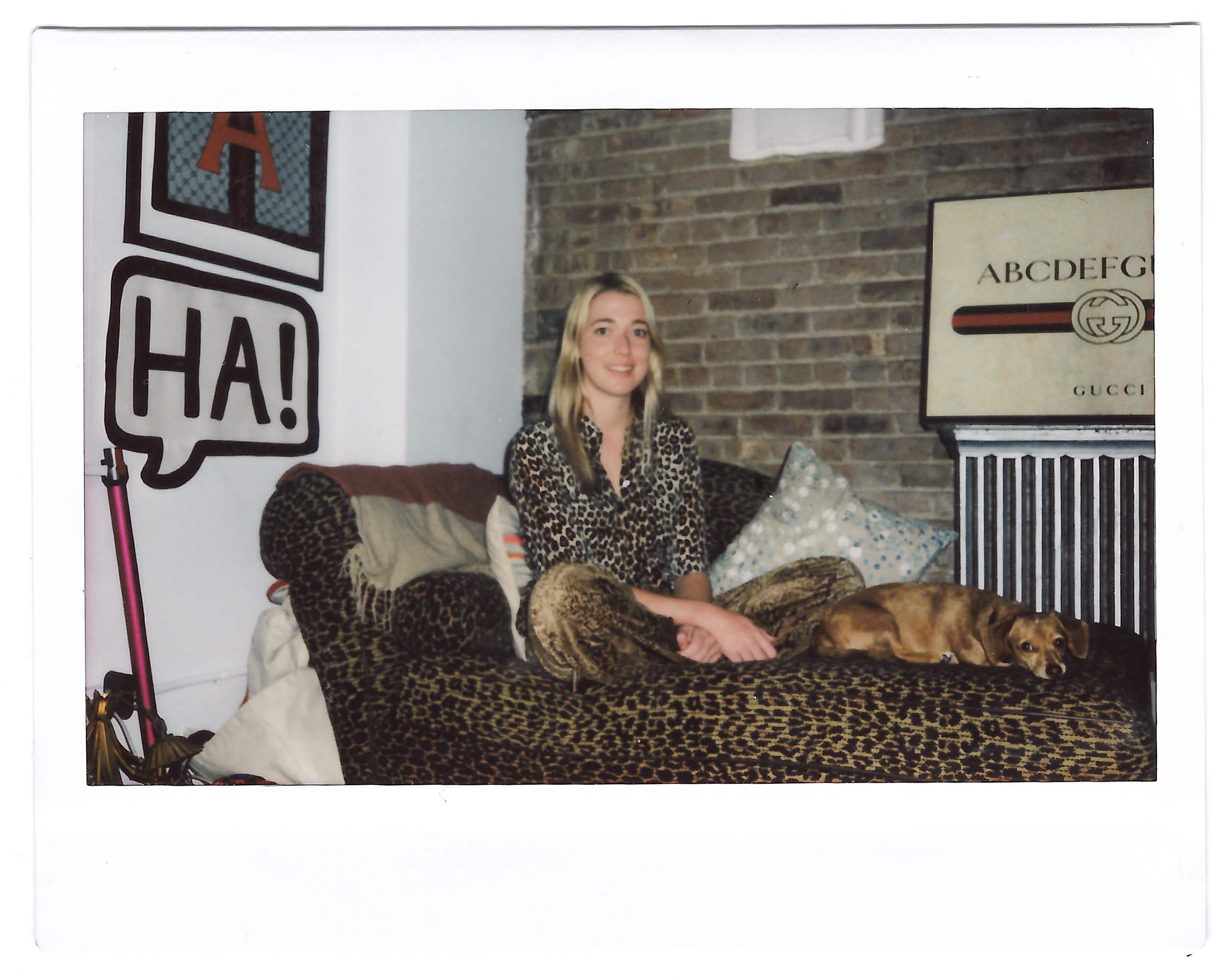
Photos & Video by Johnny Carrano.
Follow Angelica here.

